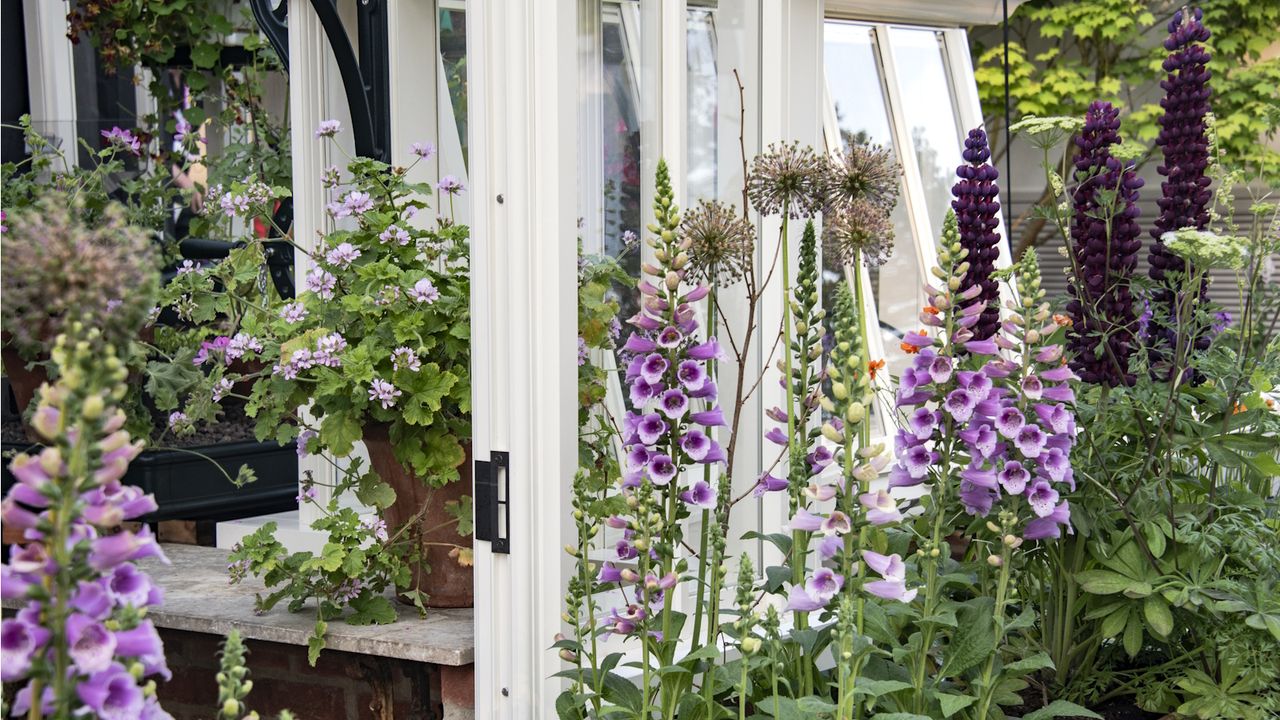If you’re searching for cottage garden concepts to design a delightful, distinctive area, begin by envisioning the potential of the space. Could it feature cascading vines climbing along walls, elegant clusters of gently colored perennial plants, or old-fashioned pots overflowing with fragrant blossoms and fresh produce?
Cottage garden concepts are inspired by nature, focusing on harmonizing with the environment rather than opposing it. They create the most charming scenes: aged stone walls covered in moss, climbing plants spreading across fences, vibrant flower borders, and the fragrance of roses filling the air. Rich with lovely plants, cascading blossoms, and sprawling vines, a cottage garden is more about curating than constructing, integrating the natural surroundings into your space.
Cottage garden ideastend to concentrate on ‘slow gardening,’ letting naturally seeding flowers take root, such as foxgloves and ferns that will spread on their own, along with romantic roses and trailing clematis plants. If you are just starting outplanning a cottage garden, these 33 motivating concepts will provide you with an excellent beginning.
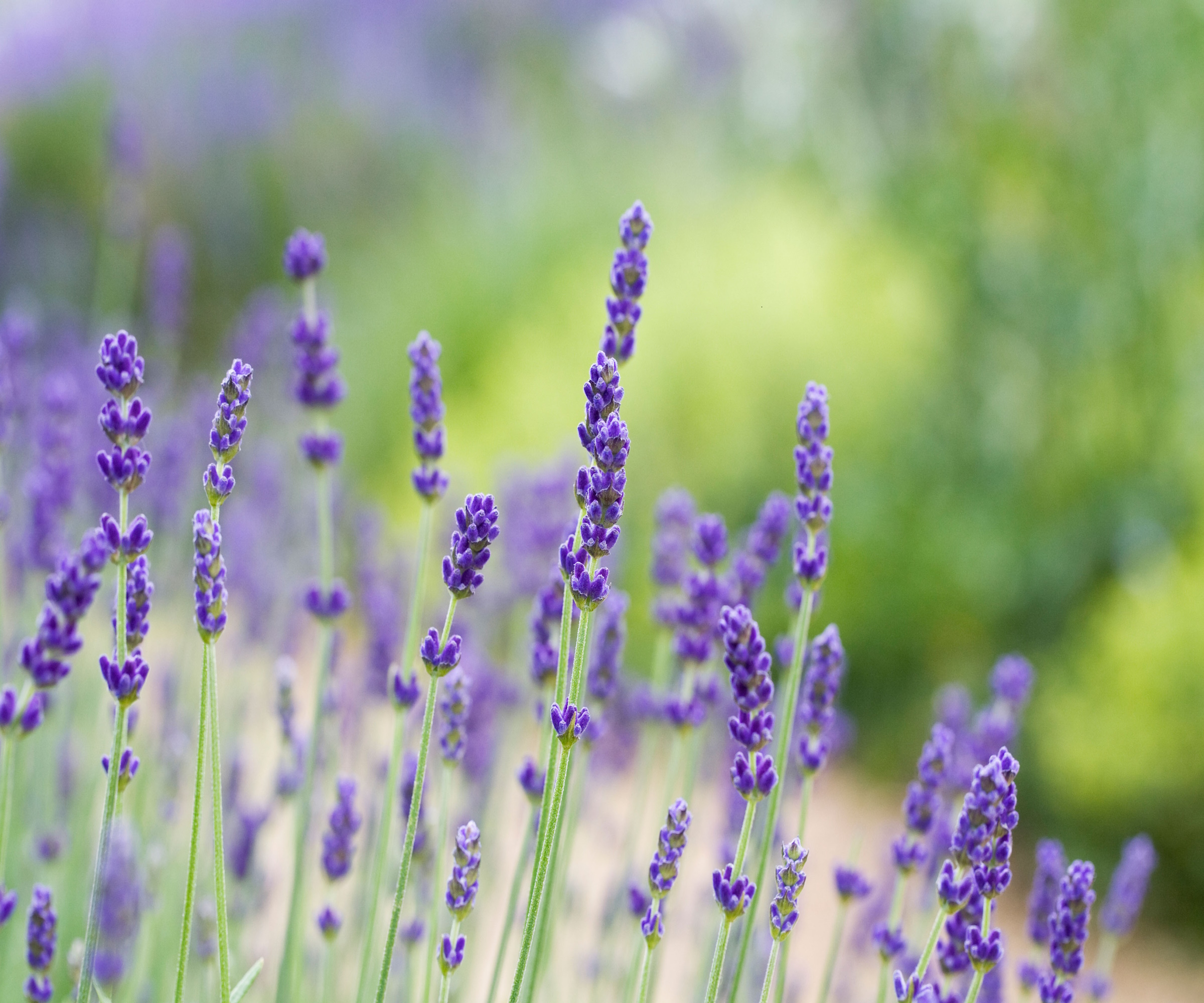
Cottage garden ideas
Cottage garden plantstend to generate plenty of flowering, vibrant, and colorful blossoms. Roses, lavender, and tall spikes of lupines, foxgloves, and hollyhocks take center stage. This type of planting creates a more gentle appearance in the garden and allows you to experience the fragrance, leaf textures, and a mosaic of calming colors up close.garden color schemes.
1. Eliminate the lawn
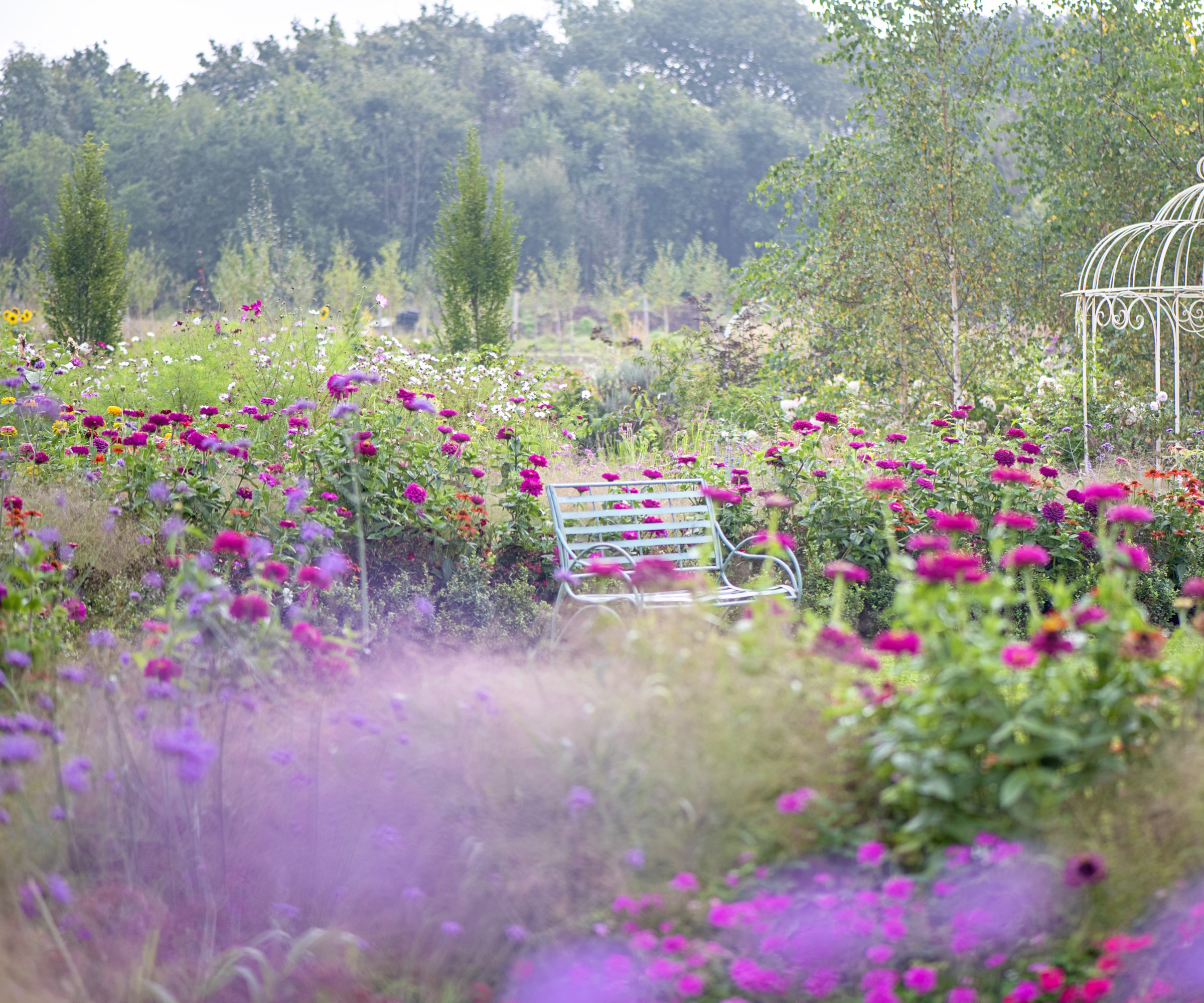
So, if you’re interested in discoveringcottage backyard ideas and front yard cottage style garden concepts, a common approach is giving up the lawn.
In a classic cottage garden, there is no space for a lawn. Every available inch should be utilized for planting, whether it’s with attractive plantsflower bed ideas, delectable fruit or produce or fragrant herbs.
“Usually, the cottage garden surrounds a charming house decorated with fragrant roses and climbing plants, is a small area without a lawn, and features paths that cross through it,” says a gardening expert.Leigh Clapp.
Corridors offer entry and organization to the area, while vibrant vegetation in the garden creates plenty of visual appeal and personality.
2. Allow your planting to cover the entire soil surface

Exposed soil is a strong indicator of a well-maintained garden, contrasting with the more natural cottage style. To prevent this, include low-growing and spreading plants in your design.
“Creeping thyme, wall germander, and snow-in-summer are lovely plants that can help to cover exposed soil and enhance garden edges,” saysRachel Bull, Director of Gardens atHomes & Gardens. To achieve a more authentic appearance, you can also place stones and large rocks where plants can wind around them.
Don’t overlook adding height to your borders,” Rachel adds. “I enjoy incorporating spires and spikes in my garden beds, like delphiniums, lupins, and foxgloves. The best flowering climbers and the best flowering shrubswill make sure that your plan remains balanced.
Creeping thyme live plants can be purchased at Walmart.
3. Surround your trees with flowers
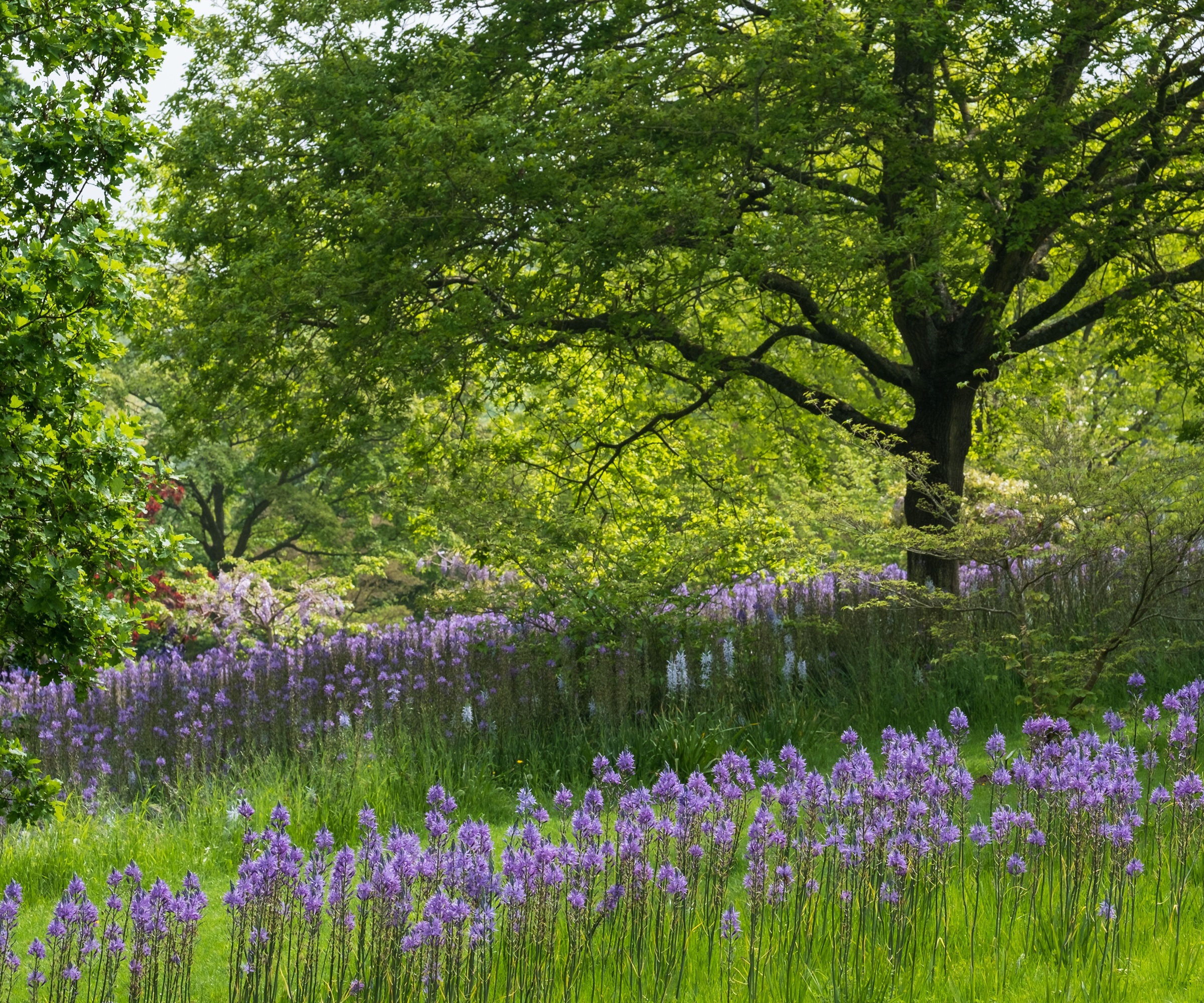
Planting seasonal flowers beneath your trees is an excellent method to enhance the appeal of a typically dull area in your garden. There are numerous various techniques for doing this.landscaping around treesbut bulbs are among the simplest choices.
Attempt a lively arrangement of red tulips mixed with grape hyacinths that have spread naturally, along with touches of yellow tulips and daffodils, creating an artistic color scheme.
The charm of bulbs is that they are ideal for gardens of any size, will spread and blend naturally over time, and also need very little care.
Plant a combination of thebest summer bulbs and the best spring bulbsto maintain a consistent appearance during the warmer seasons.
Spring flowers are available at Walmart.
4. Incorporate screening into your countryside garden
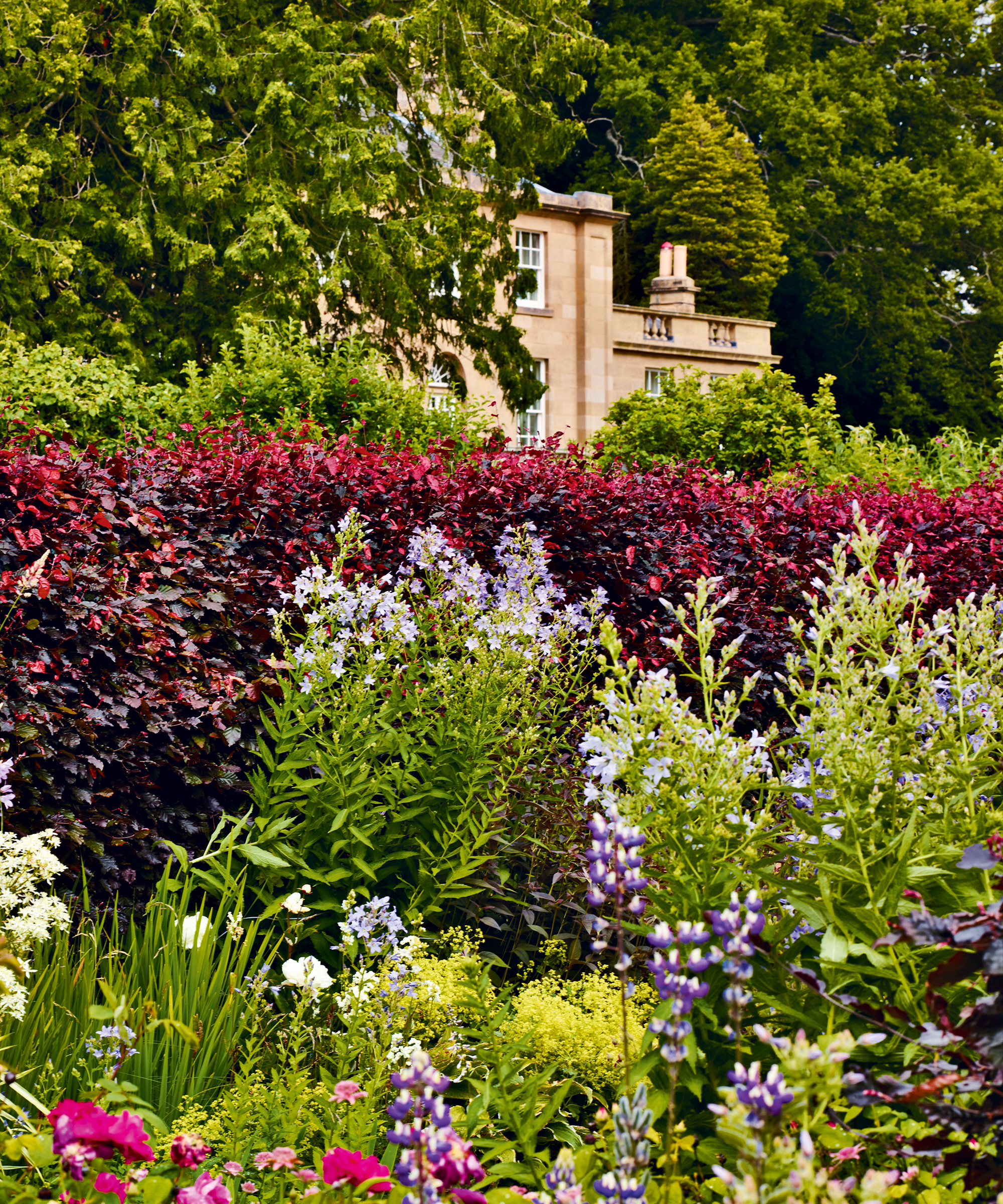
Certainly, growing colorful flowers is the initial step in the learning process.how to create a cottage garden edge, however, hard landscaping is also crucial in developing an attractive area.
Along with offering significant confidentiality,garden screening ideaswill assist you in defining your garden and separating the planting into distinct areas.
When searching for screens to incorporate into your cottage garden concepts, choose a natural material like wood to ensure it integrates seamlessly. As an alternative, select a creatively weathered decorative metal style for a striking feature that will provide visual appeal throughout the seasons.
5. Establish your own guidelines for a cottage garden
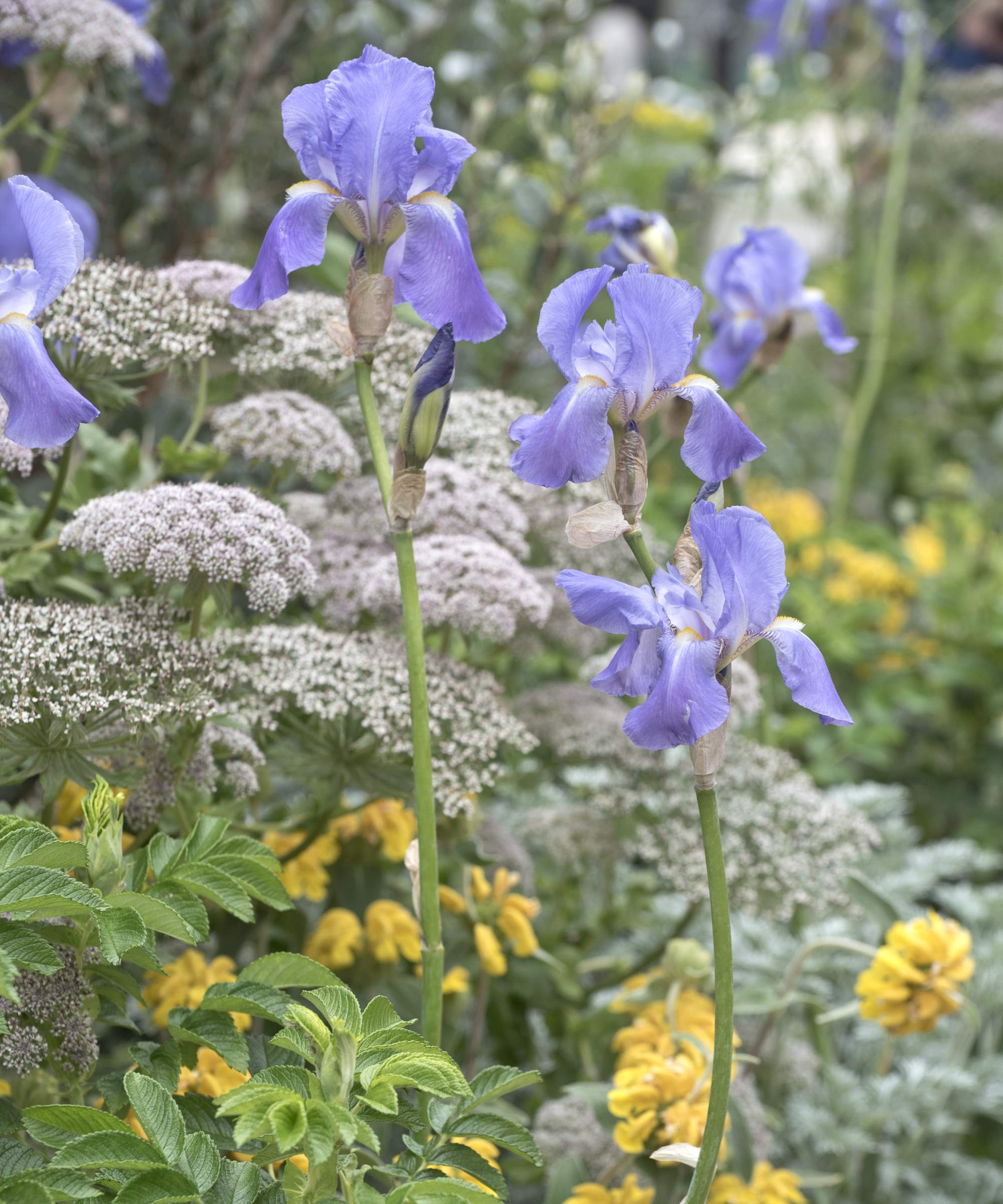
Based on the romance of classic essenceEnglish garden ideas, cottage garden concepts are a popular choice and can be seen alongside a variety ofhouse styles. No two cottage gardens are identical – your cottage garden ideas will be a representation of your personal preferences along with inspiration from the exterior style of your house.
“There is no standard cottage garden – and that’s one of the pleasures of cultivating one,” saysMargaret Hensel, author of English Cottage Gardening for American Gardenersavailable at Amazon.
Cottage gardens are unique and personal creations. I have seen hundreds of gardens in both the UK and the US, and that is one key aspect. They are the result of a gardener’s creativity and the various locations, homes, and cottages they are situated in.
Nowadays, cottage gardening is more of a philosophy than a collection of strict guidelines. It involves appreciating the beauty and complexities of nature, instead of trying to shape it according to specific standards. Informal, rather than structured. Endearingly flawed, rather than impeccably stylish.
Although some traditional cottage garden concepts can guide you in achieving the general appearance, you should take advantage of the flexibility to design a plan that is genuinely one-of-a-kind for you and your home.
6. Choose the appropriate blossoms

According to garden designer Tracy Foster, historically, in addition to being visually appealing, the plants found in a cottage garden were valued for their ease of cultivation, practicality, edibility, or a combination of these qualities.
When choosing your planting plans, draw ideas fromkitchen garden ideas as well as companion plantingtips to help you create the perfect combination of flowers and vegetables.
It’s the flexibility of the cottage garden style that draws people in. Tracy notes that “the combination of form, texture, color, and fragrance in an apparently informal arrangement can add a rural elegance to any space, even in the middle of a city.”
To achieve an authentic cottage style, the border will feature a range of different shapes and forms. Landscape and garden designerAna Mari Bullsuggests using history as a reference: ‘Whenever feasible, consider modern plant varieties that are similar to those that would have originally been found in a Victorian cottage garden. Roses are the most straightforward option, but they should emit a fragrance.’
Tracy Foster enhances her stature withhollyhocks (seeds from Burpee), delphiniums (from Burpee) and foxgloves (seeds from Burpee). For different flower shapes, consider the flat panicles of achillea, the ball-shaped blooms of globe thistle (Echinops ritro), or lively daisy blossoms ofLeucanthemum or Rudbeckia.
7. Set up elevated garden beds to bring a feeling of organization within disorder
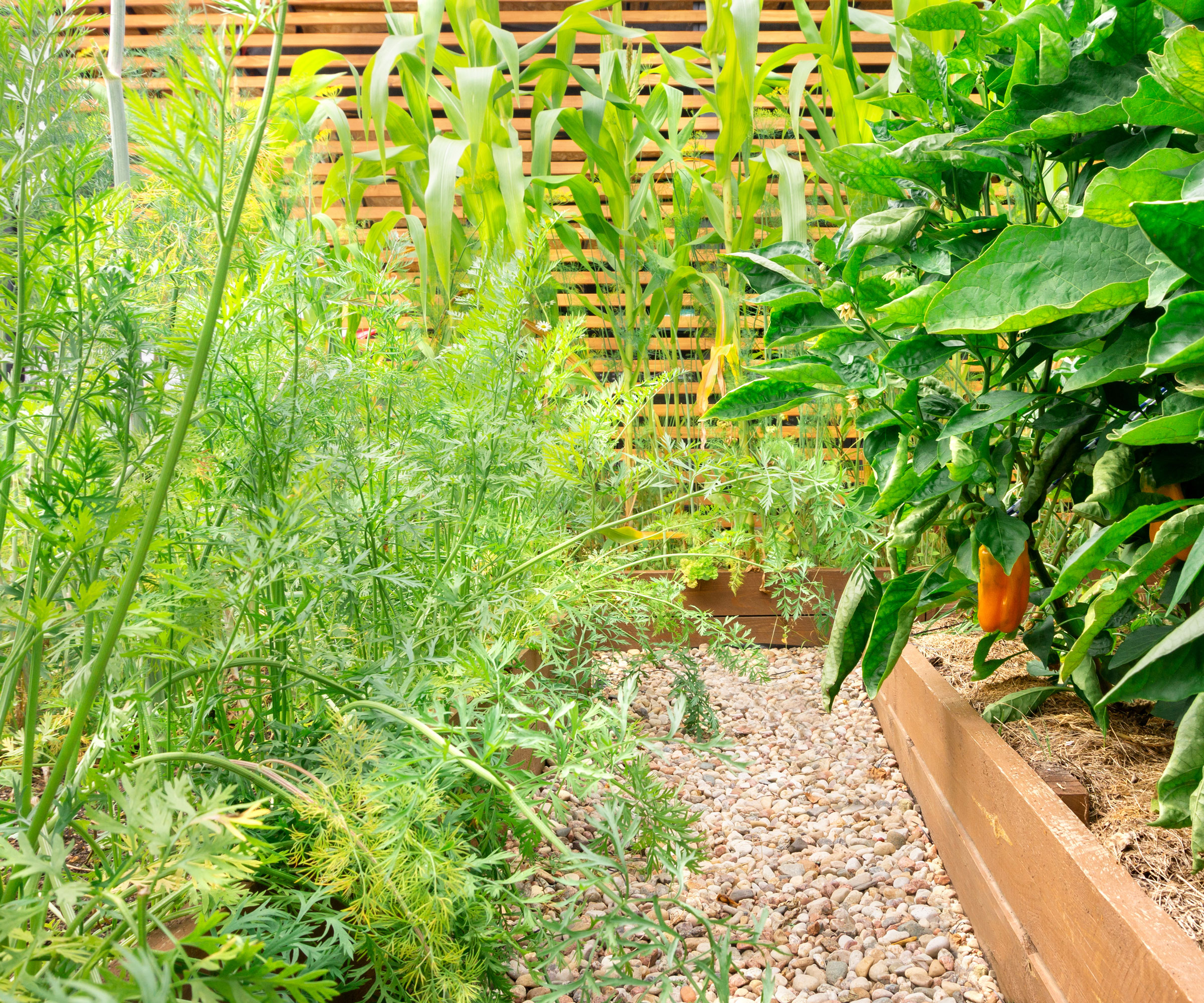
As previously mentioned, the charm of cottage garden concepts lies in the absence of strict guidelines. Thus, you don’t have to fully adopt the wild abundance of classic cottage style.
There are plenty of raised bed ideasthat will assist in organizing your area, while allowing you to enjoy the lively and untamed growth of your cottage garden concepts.
Restricting plants to designated areas not only simplifies garden maintenance and movement, but also facilitates the grouping of plants and crops in a single location – similar to how you would whenplanning a kitchen garden.
8. Introduce vertical appeal using climbing vegetation
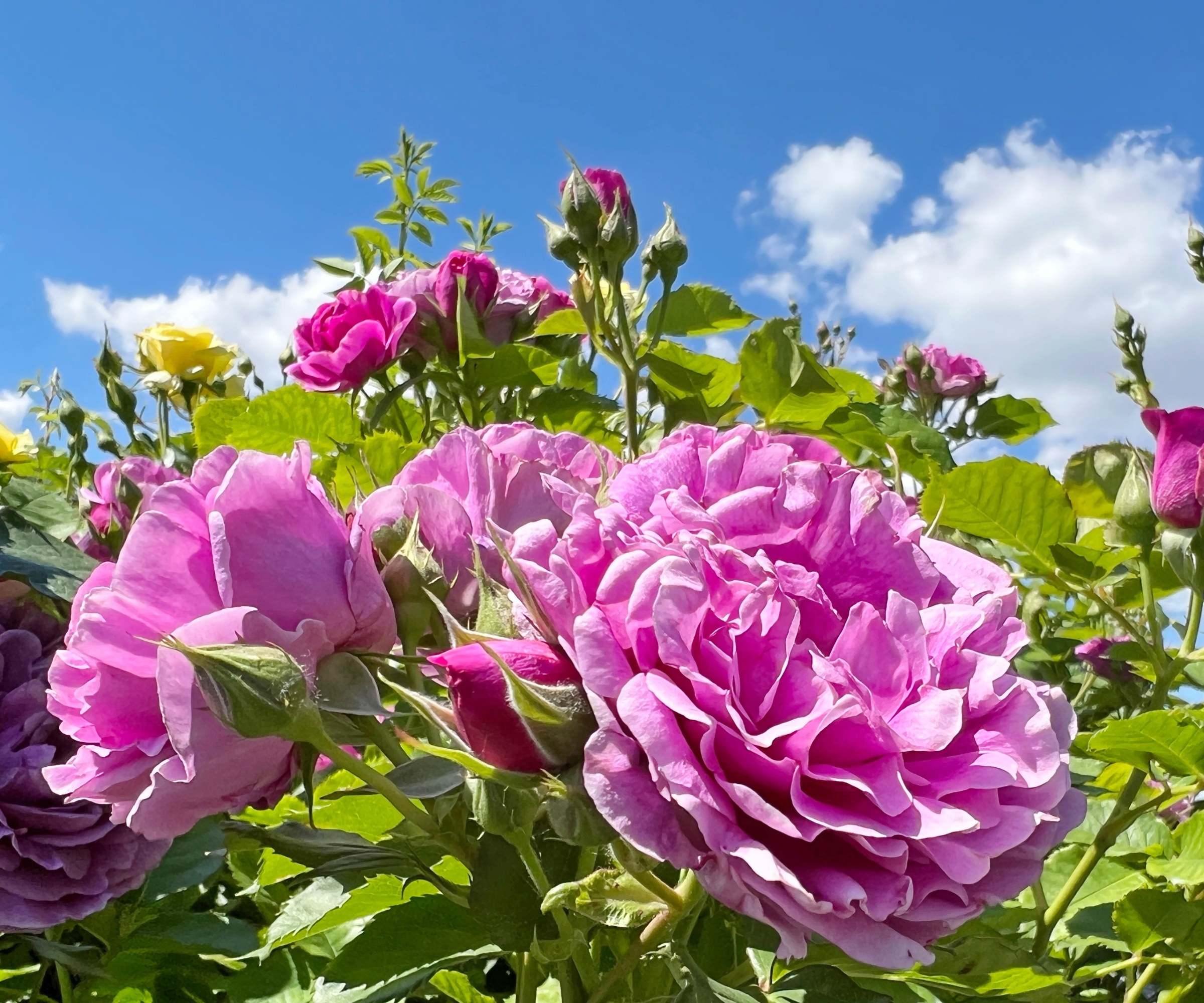
If you’re searching for cottage garden concepts that will make the biggest impression, begin with the best climbing plants. A wide range of options can be cultivated vertically, and there are numerous advantages to incorporating them—such as concealing an unattractive wall or filling the air with a pleasant scent.
For thousands of years, climbing plants have been utilized to cover surfaces or train fruit-bearing plants against a warm wall. Arches, archways, tunnels, trellises, and pergolas can transform into beautiful centerpieces decorated with an abundance of flowering roses intertwined with clematis, for instance.
Roses are a timeless choice – think about arambling rose, available at Walmart– which will expand faster than a typical climber and occupy a broader area. If you’re considering incorporating roses into your cottage garden concepts, make sure you are aware ofhow to plant roses and how to trim climbing roses for maximum flowers.
9. Cultivate vegetation above for immediate visual impact
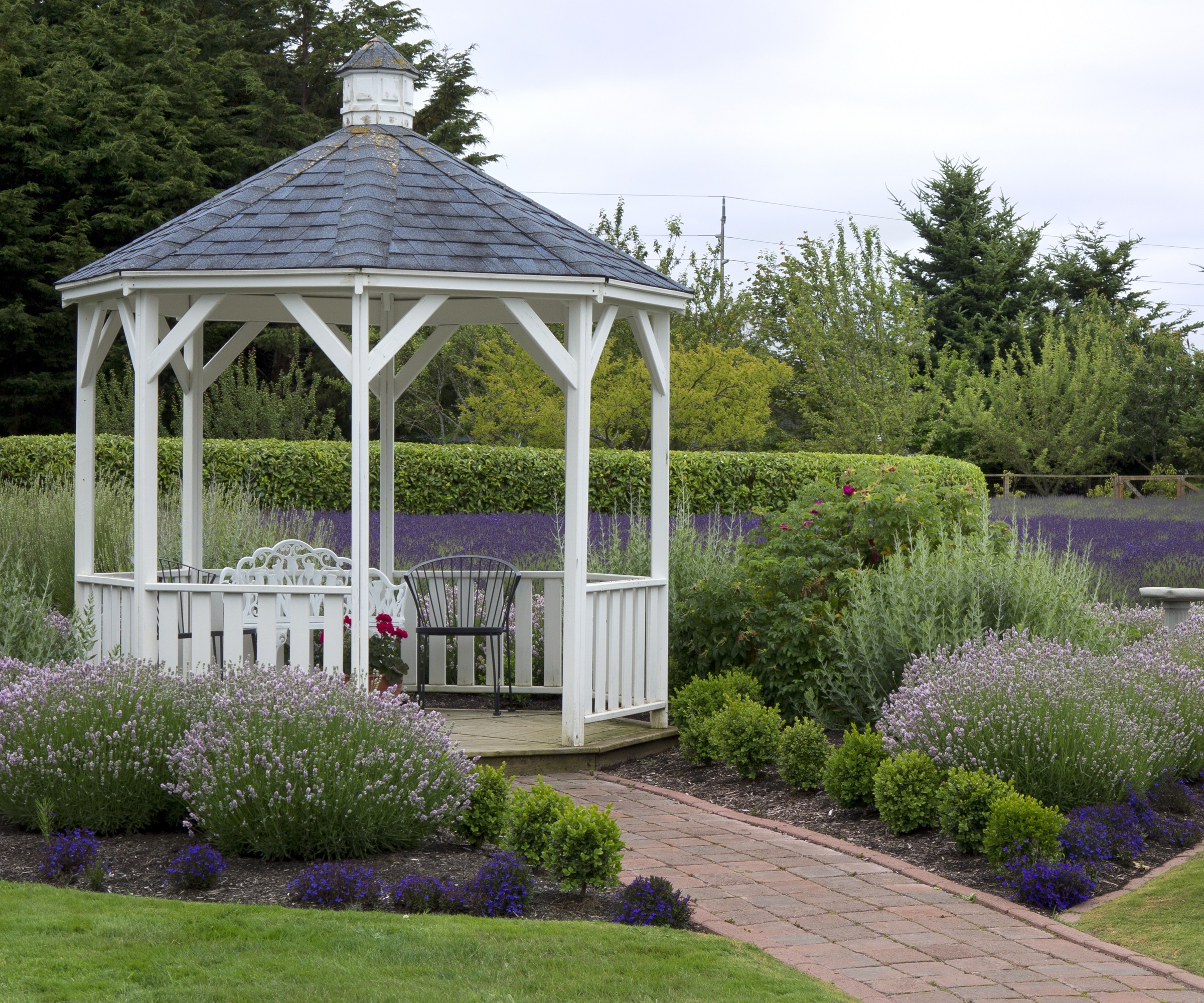
In addition to growing upwards, consider the options of cultivating plants above ground in a cottage garden, for a more engaging experience.
Pergola ideasare well-suited for this use and can also form a private, shaded, and protected space to avoid the midday sun.
If you know how to grow wisteria, then it’s the clear option, with its contorted branches and magnificent cascades of purple blossoms; however, roses, clematis, honeysuckle, and jasmine are all excellent choices for a cottage garden to add vertical appeal.
10. Choose a pink and lavender color scheme
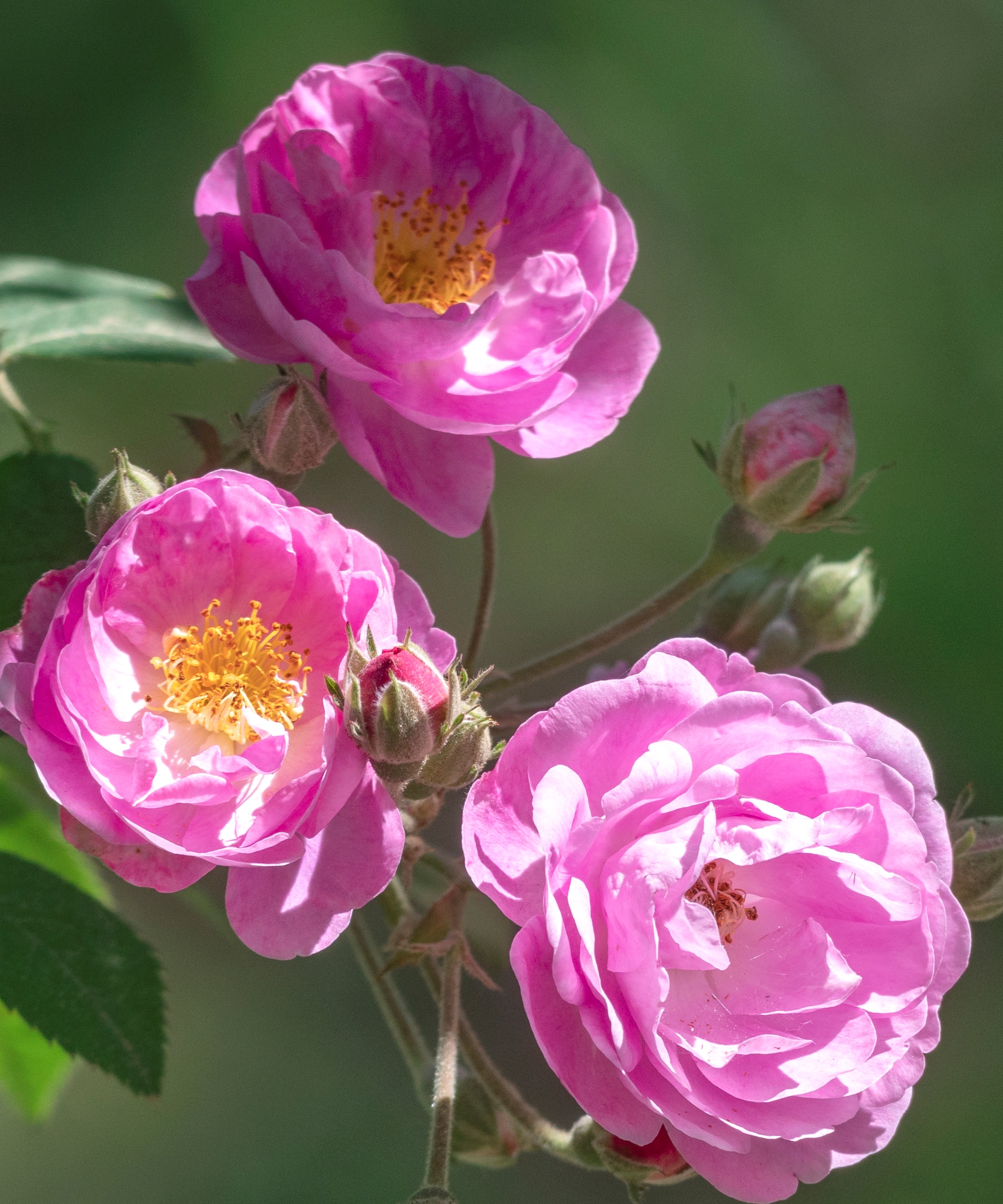
Select the appropriate color scheme for your cottage garden style and you’re already half-way to success. A soft, subdued palette of gentle pinks and purples (maybe with a touch of violet to introduce some flair) is always effective, particularly if you maintain simplicity and remain consistent with it.
Incorporate some elements of vintage cream and place everything on a neutral green background, resulting in a truly artistic appearance. As your confidence grows, introduce soft greys, faded blues, and silvery plants to create depth and intricacy that will blend seamlessly with your style.
Where to begin? With waves of celestial mauve lavender and fluffy, traditional pink roses (naturally), along with vibrant purple and magenta Verbena bonariensis that flower throughout much of the summer. For appeal during fall and winter, discoverhow to cultivate thorn trees, Euonymus europaeus, which will result in pink and orange seed pods during late summer.
11. Establish a wildflower meadow in your cottage garden

One of the most charming cottage garden concepts, incorporatingwildflower garden ideas to your boundaries creates a feeling of regions being taken back by the wild, and, as they will be filled withplants for pollinators, is an excellent method to draw these valuable insects to your garden.
Meadows can add a beautiful touch to a garden, whether they consist solely of wildflowers or include additional plant species. A meadow doesn’t need to be large – you can plant seeds in unused corners or even in big pots, provided the area receives ample sunlight.
Classic seed blends may feature ox-eye daisies, marigolds, teasel, chamomile, foxgloves, and poppies, but you can also add the much-loved cosmos andAmmi majus.
If you’re looking to add a wildflower meadow to your cottage garden concepts, you need to be aware ofhow to establish a wildflower meadowto make sure you create a vibrant collection of flowers.Wildflower seeds can be purchased at Walmart.
12. Employ routes and procedures to designate sections
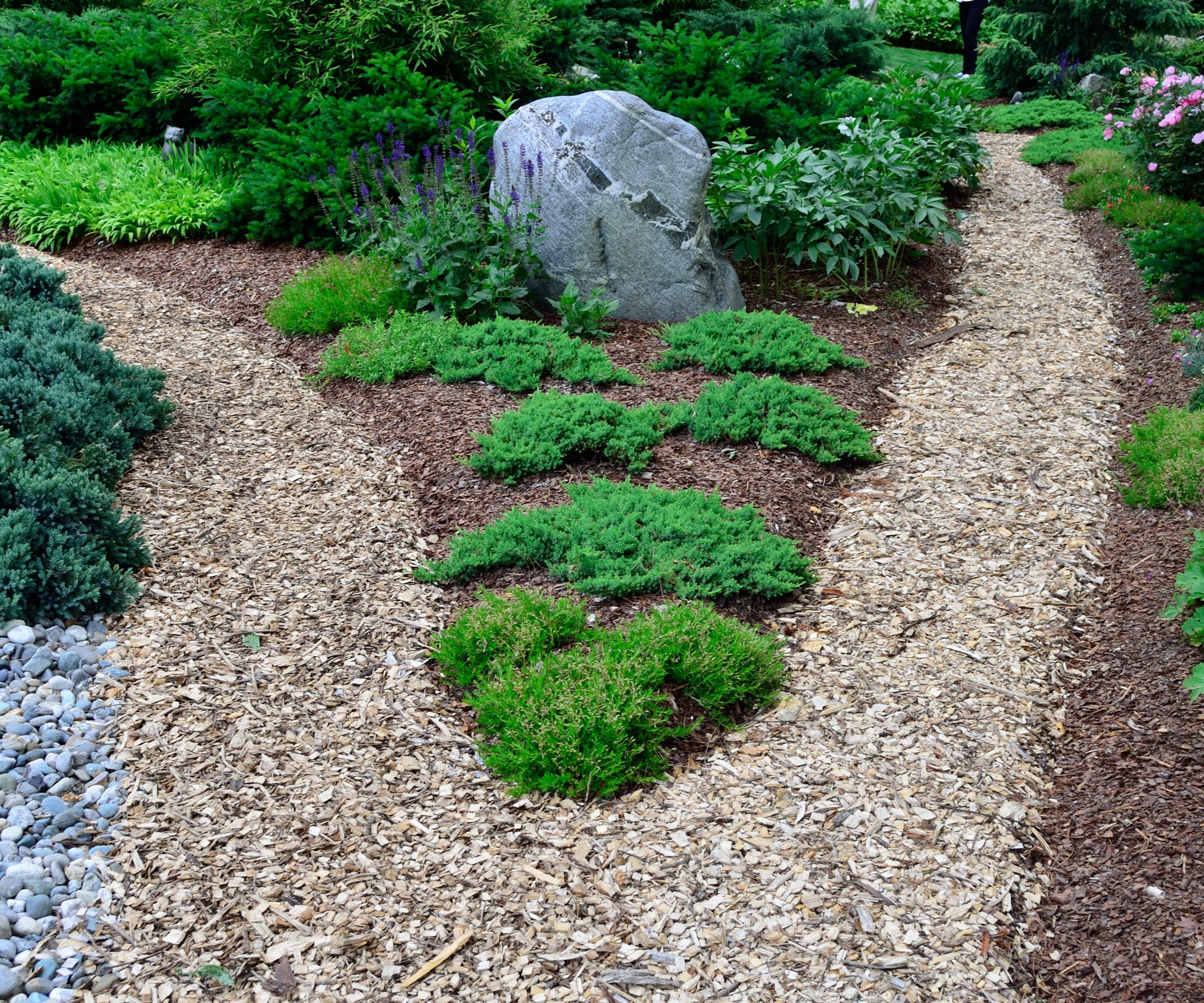
In earlier times, cottage gardens did not feature expansive, well-kept lawns, but instead had meandering paths. garden pathsproviding entry to various locations
Although currently there’s no justification for not enjoying a lush grassy space, think about how a winding path would enhance the visual appeal and functionality of your cottage garden concepts.
Paths are significant for providing visual contrast, creating a feeling of exploration during your walk, and offering access,” says garden specialist Leigh Clapp. “Choose materials that match the overall aesthetic, like aged bricks, flagstone, wood chips, gravel, or stepping stones, for paths and surfaces.
Stairs are also an excellent method to incorporate various levels in a cottage garden and create a beautiful area for placing potted plants.
The key is not to create a straight path through the garden—make it twist and turn; it should look spontaneous. Although it requires thoughtful planning to design the ideal route, you want it to seem natural.
If you’re seeking a different approach to the conventional lawn of grass in your rural garden, there’s a more environmentally friendly option than using concrete:
“A field is far more intriguing than a neatly arranged patch of grass – and it’s also significantly more environmentally friendly,” says the gardener.Monty DonHowever, simply allowing the lawn to grow is not sufficient.
Don recommends incorporating plug plants into your lawn, including fritillaries, narcissi, meadow sweet, cowslips, and scabious. “These varieties should all handle the competition from the grasses,” he explains.
You’ll have to determine the optimal time of year toplant grass seed. Meadows should be mowed once or twice annually, with all the cut grass removed and added to the compost pile. To make it easier to move through the tall grasses in the meantime, mow a broad path – this will form a charming pathway that guides you deeper into the garden.
13. Blur the boundaries
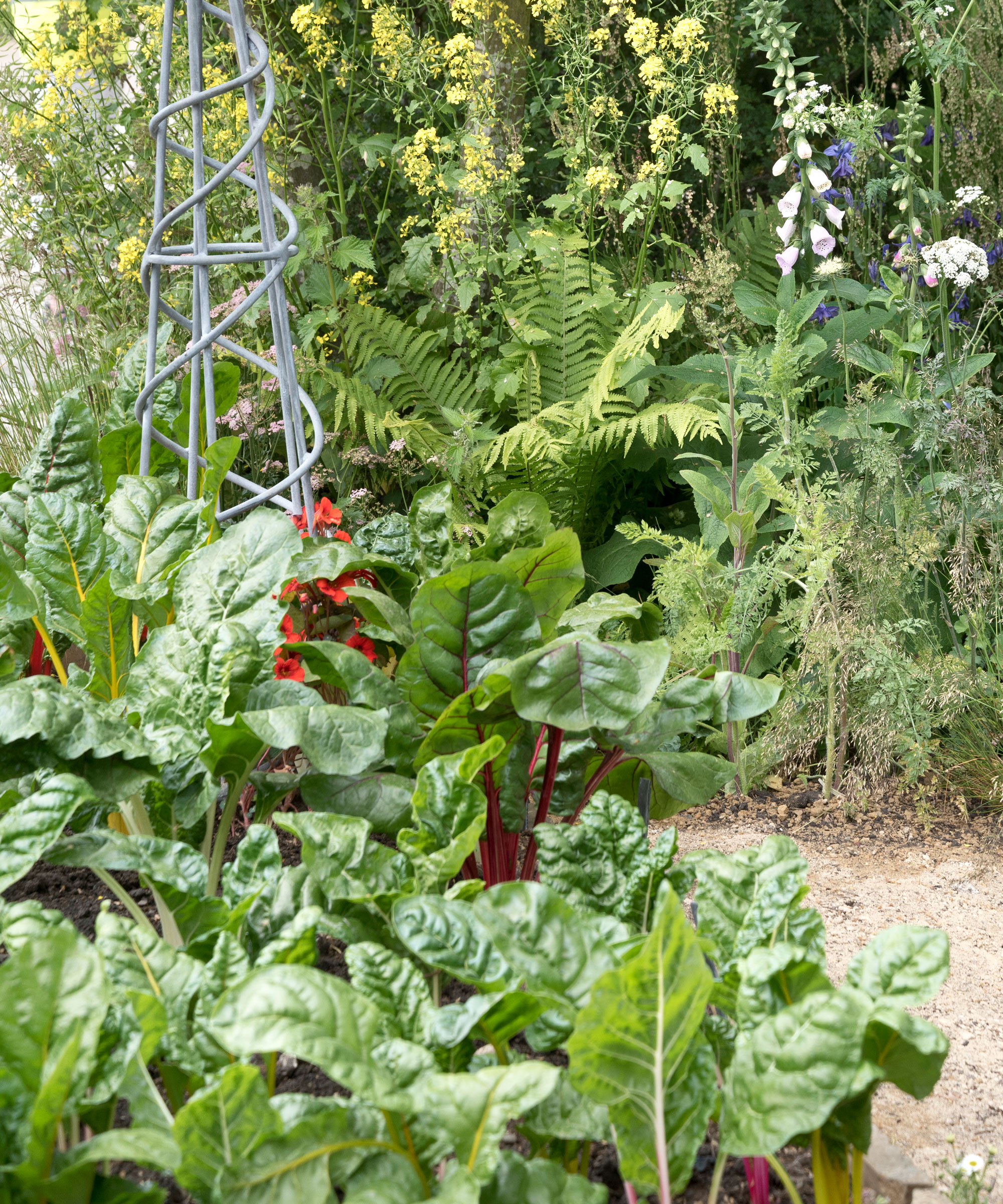
This is very simple to accomplish. Choose plants that will drape over paths, spill from arbors and pergolas, and spread across walls and fences. This creates a gentle effect that blends the rigid elements of the landscape into the background, instead of letting them stand out as the main feature, which is commonly seen in more modern gardens.
It’s time to allow nature to proceed on its own. Store your pruning shears and let your plants grow freely. Achieve a blurred look using lady’s mantle,Alchemilla mollis, to create a path. You can also grow short native plants, such asbearberry shrubs or lingonberry shrubs, which will cover exposed soil and soften the edges of your walkways.
The delicate, lace-like blossoms create a scalloped border. You can’t surpass the light and airy cow parsley for blending into rigid edges. It’s as if you’re viewing things through a filtered lens to make them more appealing.
14. Enhance your cottage garden with planters
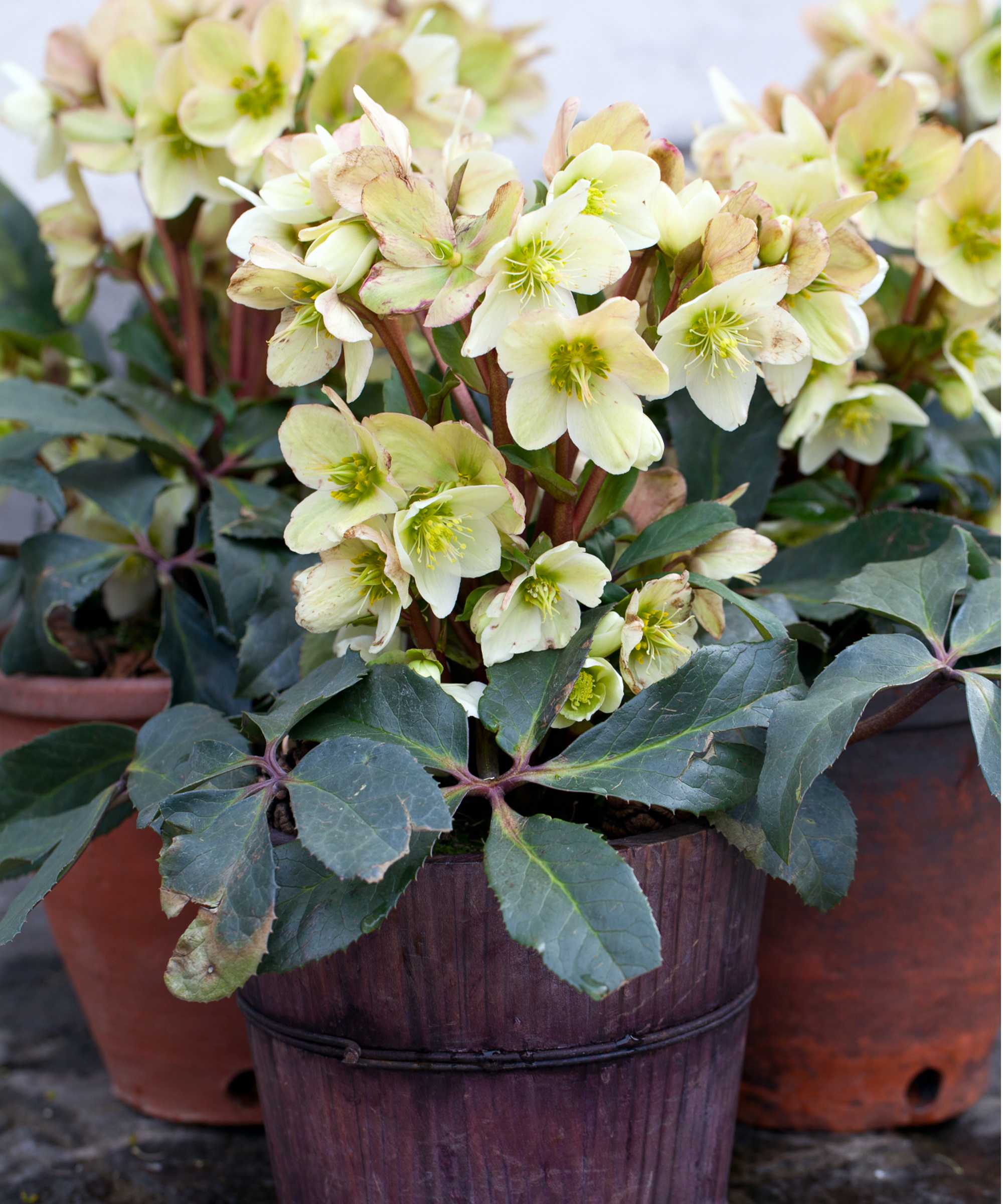
Container garden ideashighlight the ideal way to incorporate hard landscaping into your cottage design. They also provide numerous additional advantages.
You can also start planting earlier, as when the soil is too cold for growth in early spring, containers filled withsnowdrops, anemones, or bergenia can take in the sun’s heat from their elevated position.
You can also use your containers to showcase the changes in the seasons, for instance, there are manyfall planter ideasthat will assist in closing the divide between peak summer and yourwinter garden ideas.
If your garden is compact or mostly paved, containers can still create a charming cottage garden look and add visual appeal.cottage patio ideas.
15. Introduce the bees

There are plenty of plants for pollinatorsbut not all of these areflowers that attract bees. Ana Mari Bull steers clear of wind-pollinated plants since they don’t require the assistance of insects. She suggests avoiding double flowers, even though they look appealing in a cottage garden, as bees cannot access the plants and many of them are sterile.
For summer, Ana prefers the geranium ‘Rozanne’ for small gardens and lavender for low hedges that line a path. However, pollen availability in late winter and early spring is crucial.
She states: “Hellebores, cyclamen, primroses, crocus, lamium, snowdrops, eranthis, and winter-blooming clematis can serve as a food source for early-arriving bumblebees, which are capable of flying at lower temperatures compared to other bee species.”
Borage blossoms replenish their nectar pockets every few minutes, making them ideal for bees and other pollinators. The flowers can also be incorporated into Pimms.
16. Introduce fragrant plants
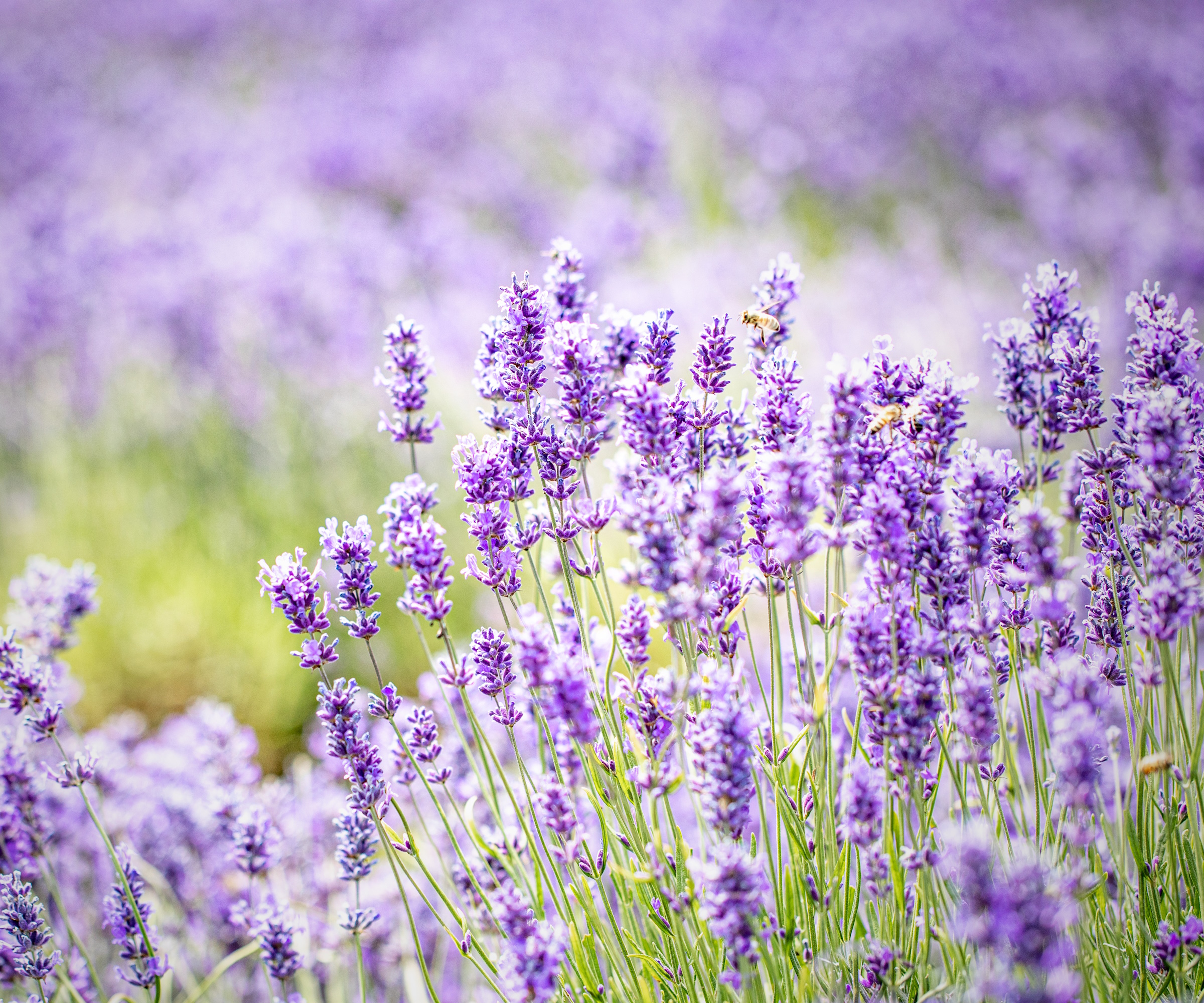
The aroma of lavender and the calming hum of bees drifting around it on a summer day is a classic yet enduring element of the cottage garden.
Place lavender close to a walkway or entrance so you can run your fingers over the fragrant foliage while passing by.
A fragrant rose blooming over an arbor will surround you as you walk beneath it, while a bushy structure of sweet peas will fill the air with their classic fragrance.
Other popular choices for adding fragrance to borders are delicate garden pinks and sweetly scented phlox, while a fragrant lilac bush is always effective and also attracts butterflies.
Lavender plants can be purchased at Walmart.
17. Add a contemporary touch to your cottage garden
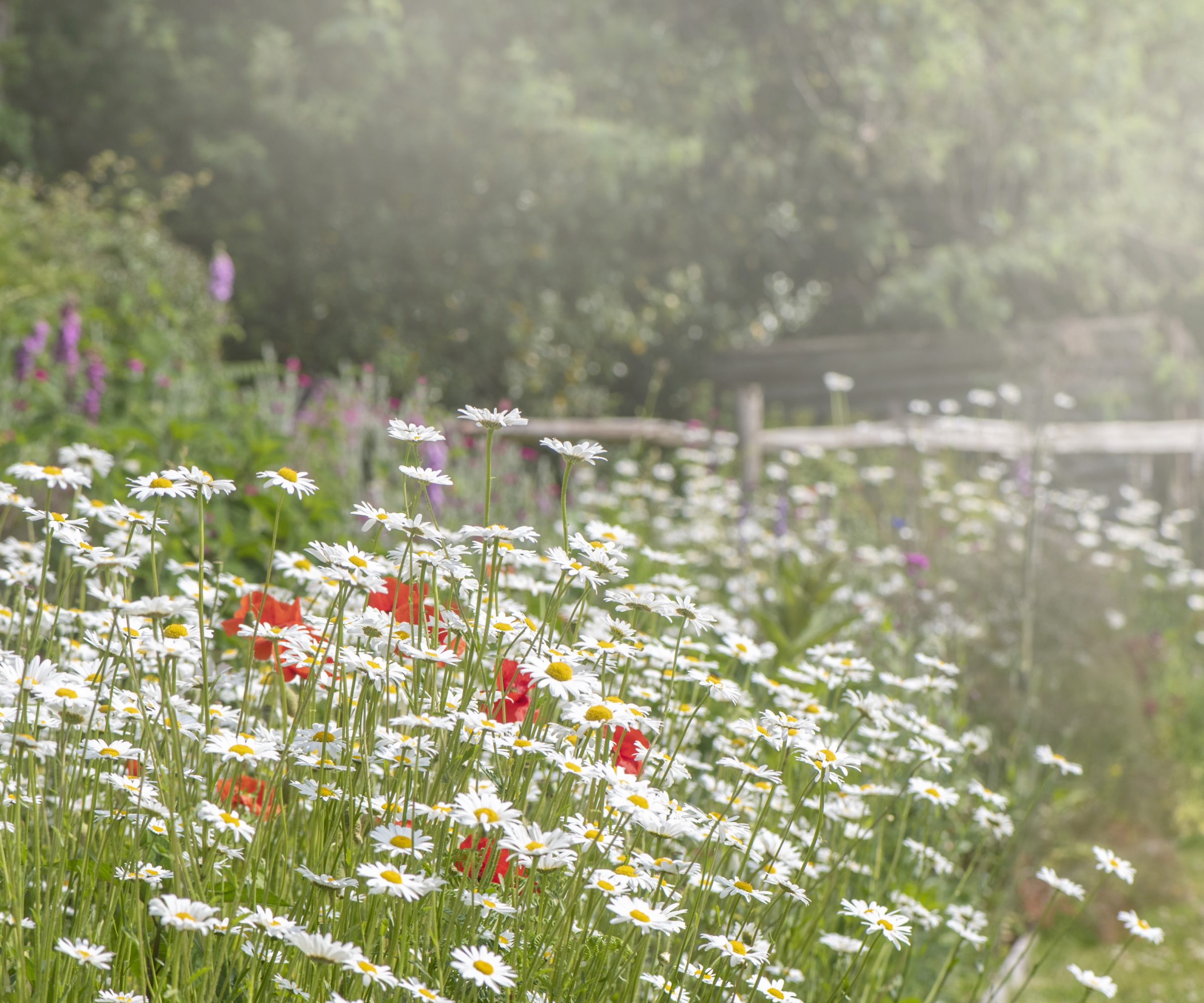
You can create a contemporary cottage garden aesthetic by blending modern materials and hardscaping techniques with classic plant choices. Imagine sleek or geometric paving elements running through vibrant borders filled with roses, daisies, and cornflowers.
“This is one of my preferred styles to design,” saysCate Singleton, garden expert and Director of Design at Tilly. ‘I enjoy the contrast between the relaxed cottage aesthetic and a more contemporary, organized look.’
Some hardscaping features can enhance the contemporary feel of this design. For instance, rather than using meandering gravel paths, you might opt for straight or paved sections with clean, precise edges that contribute to a modern style.
Clay brick pavers serve as a practical choice for any garden project and are worth considering for those looking to design a contemporary cottage garden. These pavers can be effectively used in the backyard orfront yard paving ideas, evocative of art and craft garden styling creative garden design handmade garden layout decorative garden planning craft-inspired garden arrangement artistic garden creation DIY garden design handcrafted garden layout creative landscaping ideas artful garden designelements from the twentieth century.
Mixing and contrasting textures, forms, and hues in garden beds is common in classic cottage garden styles, yet there are methods to update this approach.
A sharp topiary arrangement placed among cottage garden plants can bring a modern touch, and numerous landscape and garden designers often blend soft perennial plants with neat, well-defined hedges or topiary spheres.
“Offer a timeless design that showcases the house’s layout,” says Cate. “Consider vertical shrubs or decorative trees as main features. The straight edges of evergreen hedges can also assist in outlining the garden areas,” she adds.
Fill the established framework with layered plantings that feature flowering shrubs, perennials, and ornamental grasses,” Cate says. “You can take it further by experimenting with matching color schemes and exploring various textures while filling the garden beds.
18. Pick large roses
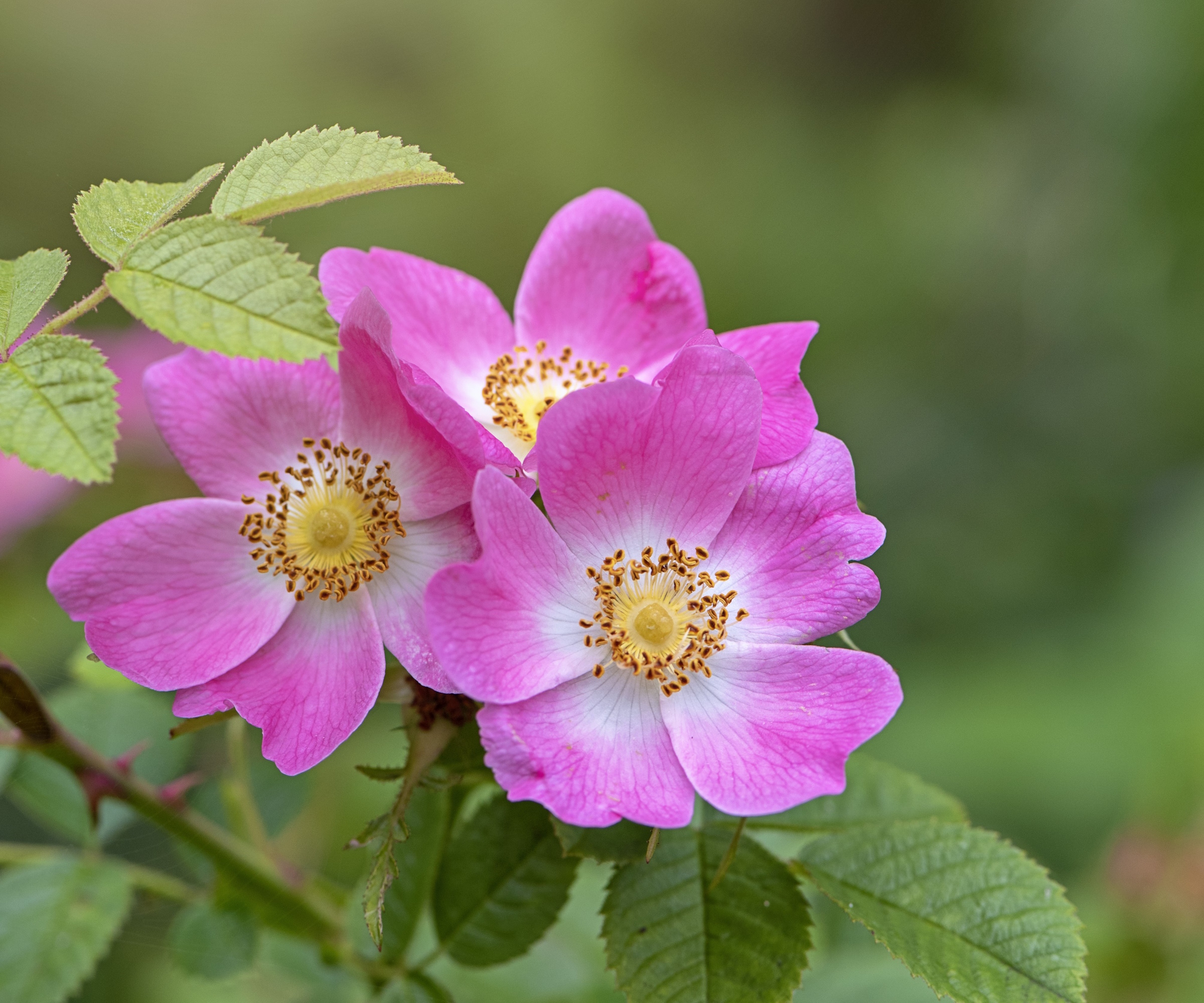
With their large, full blossoms and wonderful fragrance, traditional roses bring a touch of enchantment to the cottage garden. Offered in a variety of rich colors, their soft, ruffled petals exude a classic elegance. They are perfect for adding a feeling of romance to your cottage garden as well.
Choose something like this, “Enchantress,” a beautiful double pink ruffled rose featuring tightly packed, velvety petals that receive high marks for fragrance and is also referred to as a “repeat bloomer.”
Make sure to remove any fading flowers, and you’ll be rewarded with a second bloom. It also lasts well in a vase and looks stunning alongside lilac.
Explore Large-flowered rose bushes at Nature Hills.
19. Include a quiet area for resting
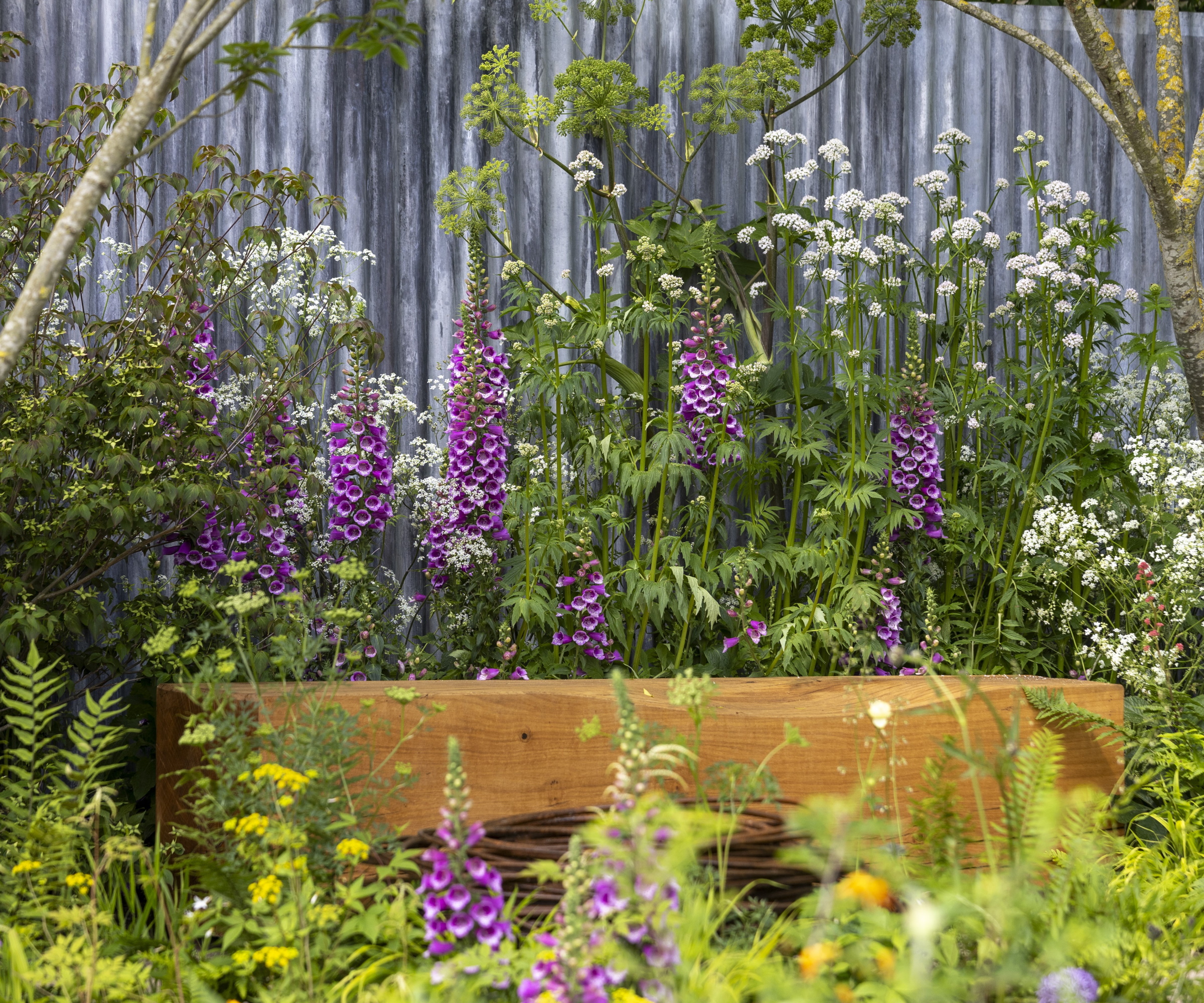
Don’t overlook the importance of designing seating spaces in your cottage garden. Placing a bench in a quiet area—such as under a tree with low branches, or an arch adorned with roses or wisteria—will surround you with the beauty and fragrance of your garden, allowing you to enjoy the scenery.
Consider carefully where you position your seating to enjoy the best view and fully appreciate your efforts. Select a location that is not visible from neighboring areas and provides some shade from the intense summer sun.
20. Arrange plants near a central feature
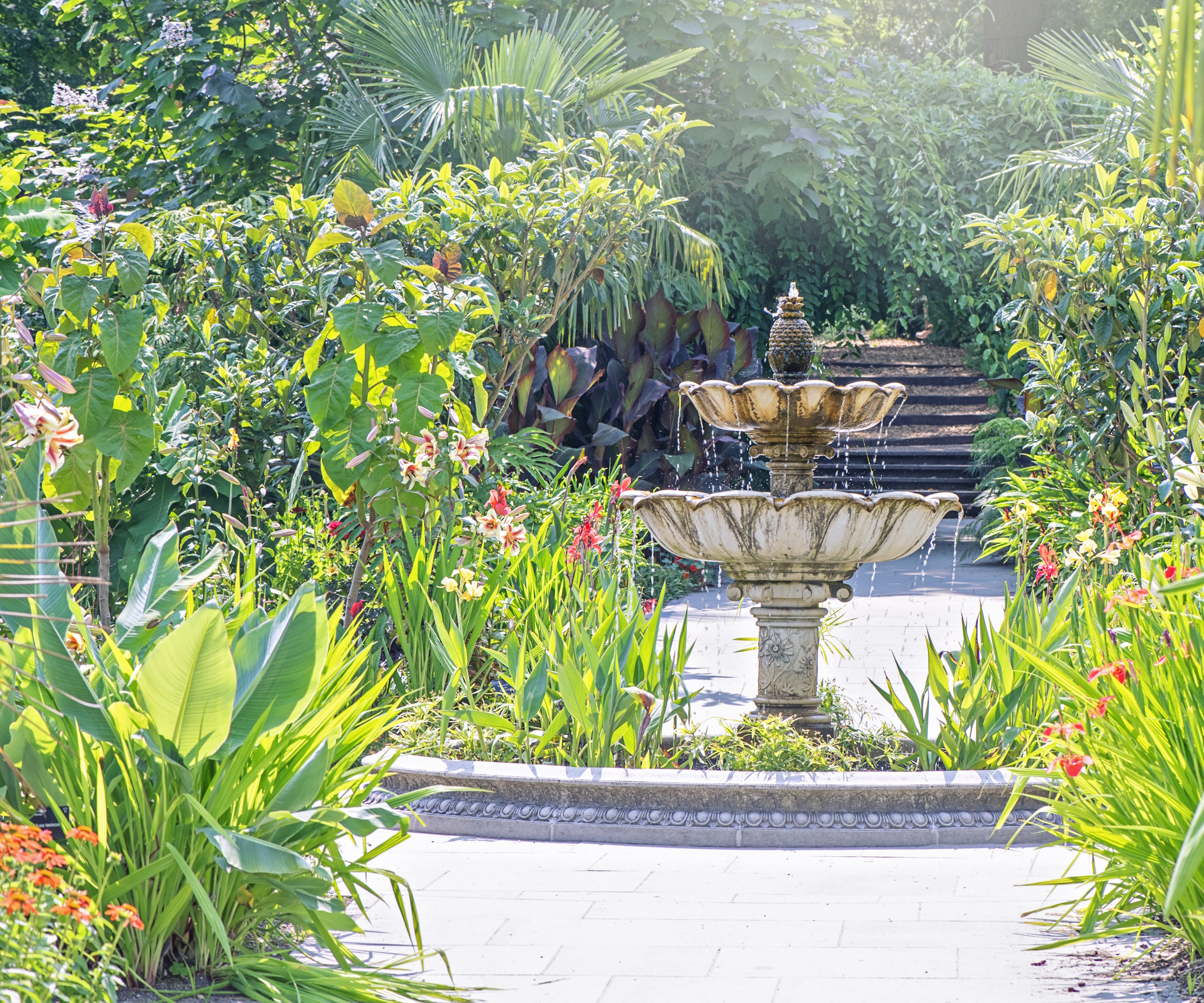
Using feature flower bed ideas, incorporating a garden sculpture,water feature idea, or decorative feature is an excellent cottage garden concept, as it serves as a central attraction that guides you through the outdoor area.
It fosters a subtle feeling of direction and organization, without crossing into formality.
A bird bathencircled by boundaries, a gentle water installation, a vibrant pot arrangement, or a charming rose arch – all these rustic garden concepts will assist you in valuing the larger design you’ve developed.
21. Create a retro showcase

Old-fashioned items bring a country feel and a feeling of the past to a cottage garden. Think about how treasures from a flea market can be reused as pots, and combine them to create an eye-catching arrangement. Weathered metal containers are especially effective in contrast with vibrant spring blooms.
Raised planter box ideasprovide more room than traditional balcony boxes or tubs and are perfect for vibrant displays of geraniums on balconies and terraces.
Repurpose a wooden crate, such as by attaching it to an old chair frame. Drill holes in the base of the wooden container to avoid excess moisture.
Additionally, watch for playful signs, outdoor furnishings, and wrought iron objects that can serve as plant displays.
22. Achieve the picket fence appearance
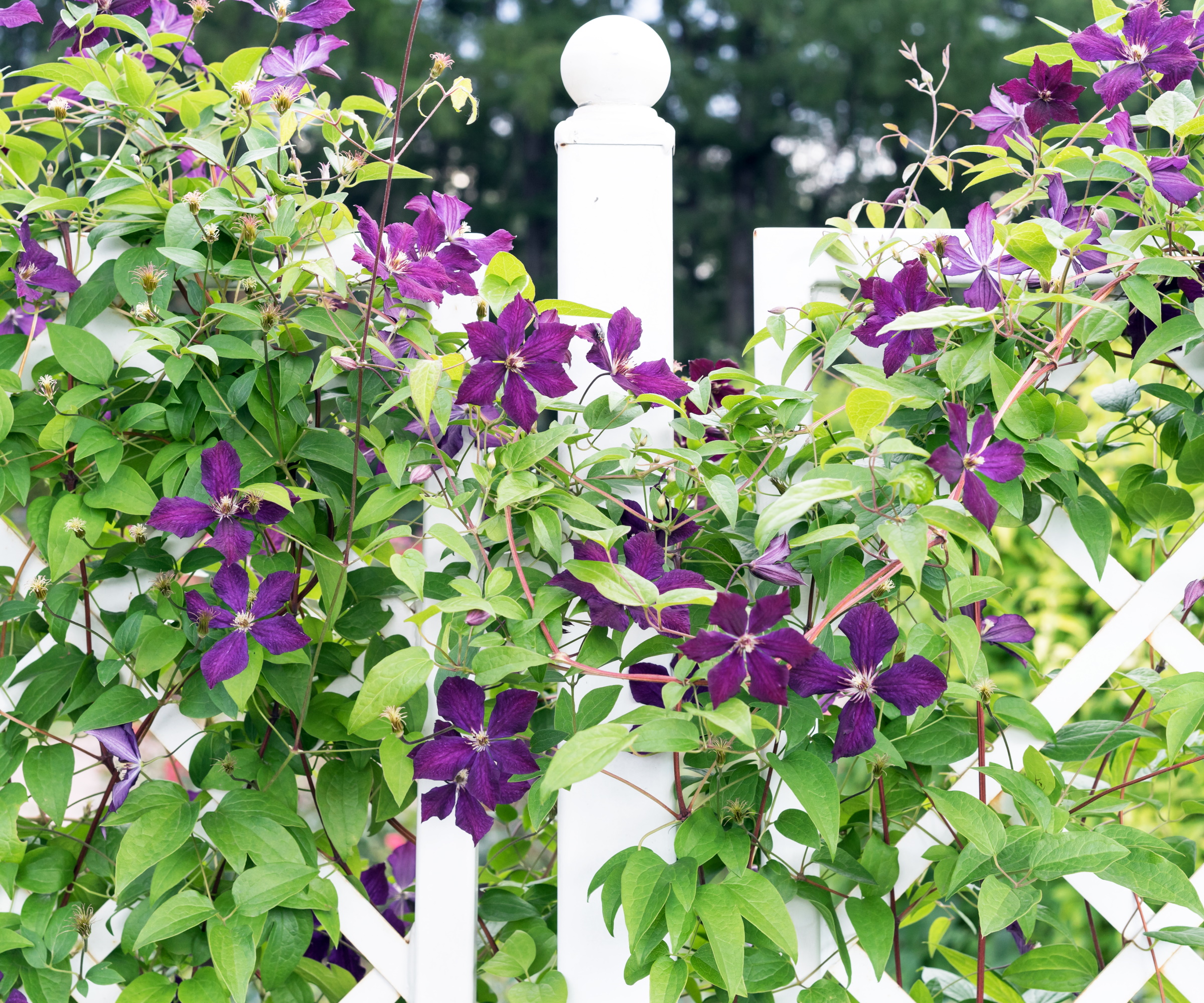
Doors are not only for entryways. They serve as an effective way to frame and separate areas within a bigger garden, aiding in the creation of distinct spaces.
Classic white picket fences are the defining feature of a cottage garden. Also referred to as palisade fencing, they were once the popular option because they could be easily built on location using standard wooden planks.
The fence was frequently painted white to increase its lifespan, and it’s this classic appearance that we have come to appreciate. Today, there are innovative durable options available in the market that offer the same look using contemporary materials that demand less maintenance.
Once they are in place, all you have to do is add a collection of flowers that will rise above and filter through the panels.
23. Make doorways pretty
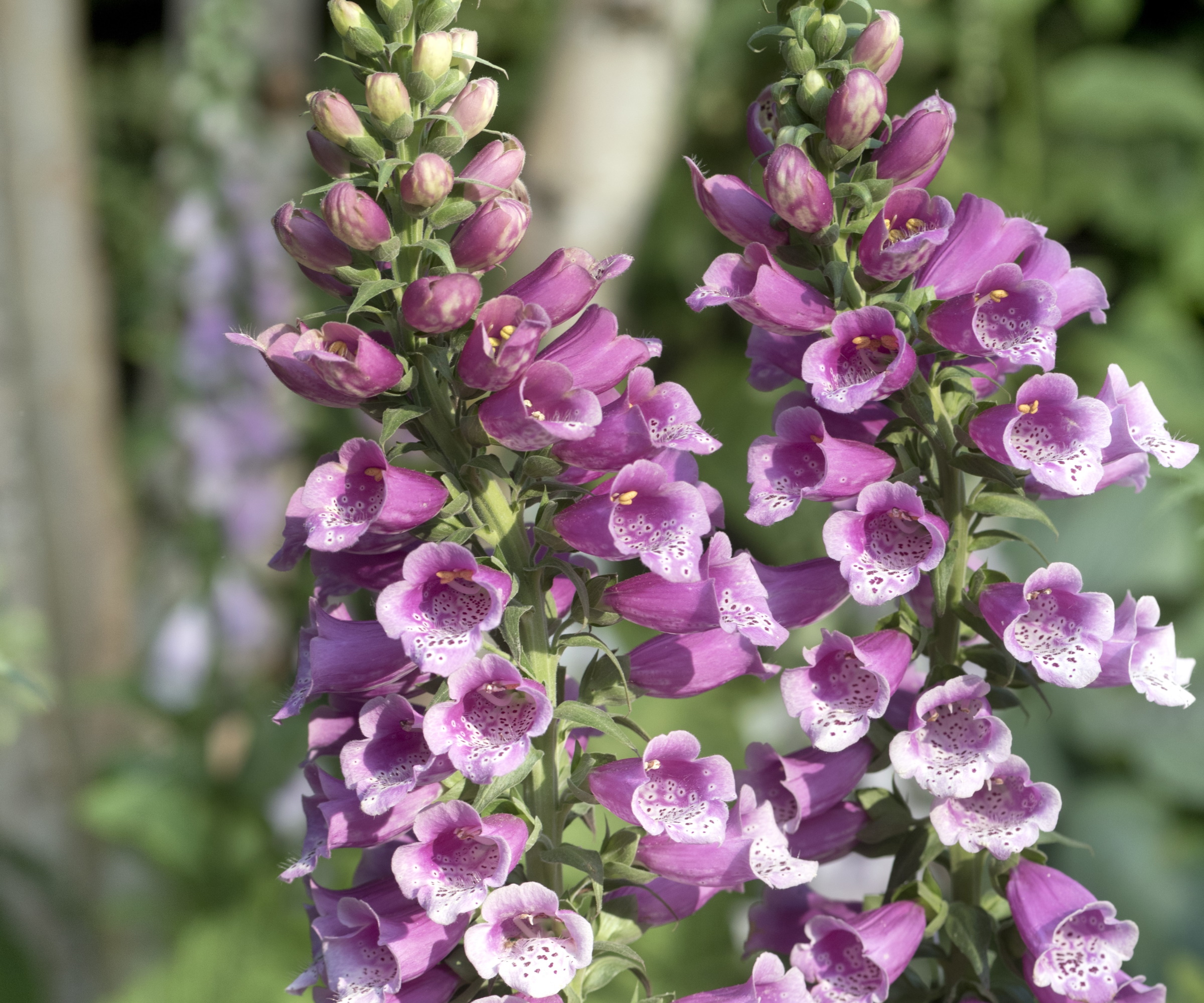
Establish the setting by surrounding both the front and back doors and windows with elegant displays of flowers and greenery, using a subtle color scheme that complements the exterior design of your home.
Include scented plants in the mix as well. As you approach your path, one of the most inviting feelings when returning home is being greeted by a delightful scent, so a pair of planters with lavender will add a unique touch to your entrance.
Combining with inviting cottage porch ideas assists in setting the perfect atmosphere and allows you to display your love for plants as well. Draw from rural style by selecting traditional favorites such as lupines and long-lasting poppies, and let them grow freely in a more organic manner.
24. Take a retreat to the outdoors with a soft lavender hue
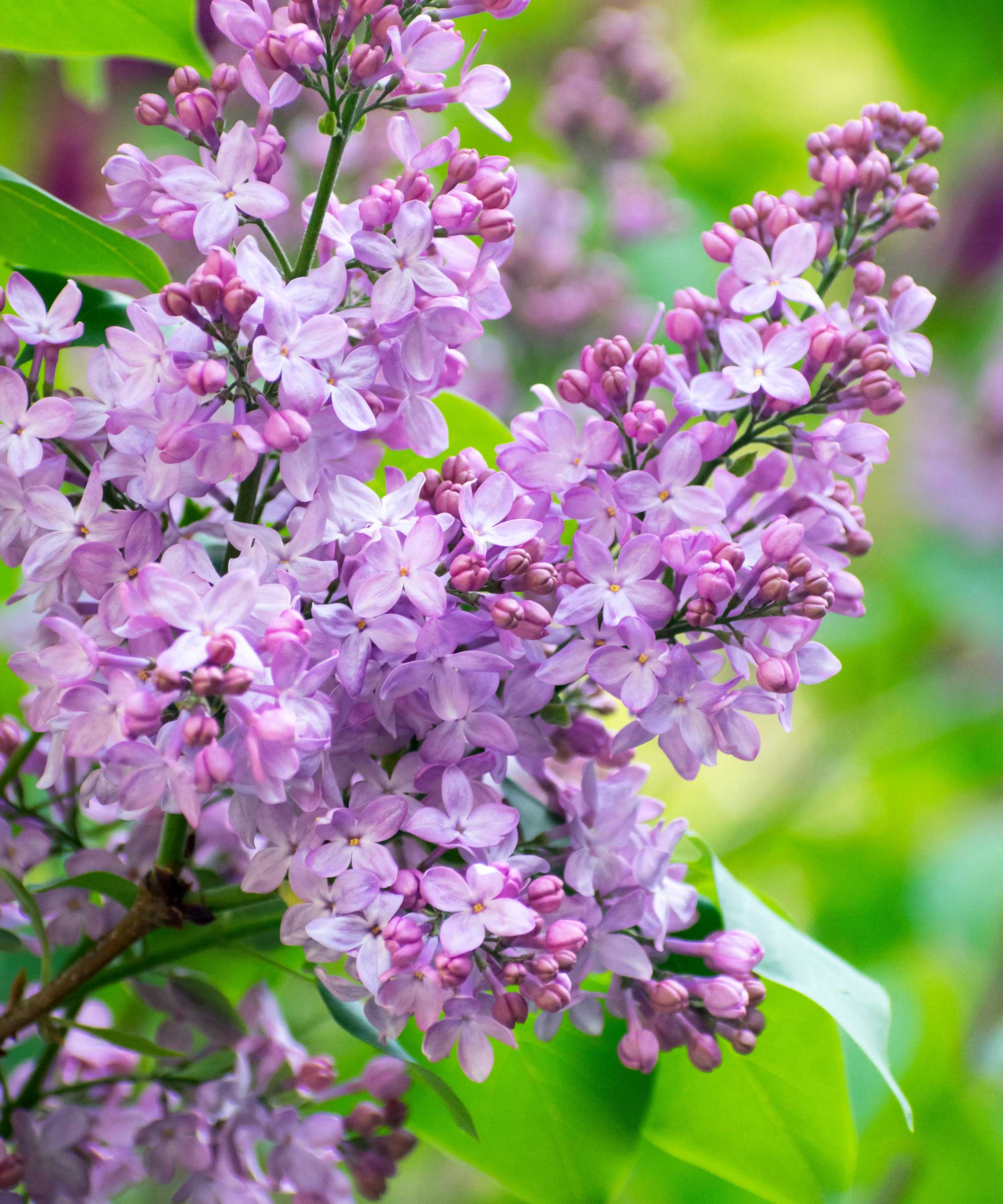
The most enchanting of plants, lavender is one of the traditional cottage garden shrubs that is now experiencing a revival. A longtime favorite in cottage garden designs, it was once seen as the epitome of style, thrives with ease, and produces vibrant clusters of flowers in various lovely hues, including its classic soft purple.
Some of the earliest types are referred to as French Lilacs. The rich, double blossoms of ‘Mme Lemoine’ are entirely white, and its strong fragrance is unmatched, making it a natural fit for a traditional garden.
Lilaccan be cultivated as a tree, a bush, or in a container depending on the variety, and contributes an attractive form to the layout of your garden.
Find a Lilac plant for your garden from Nature Hills.
25. Plant in romantic clusters
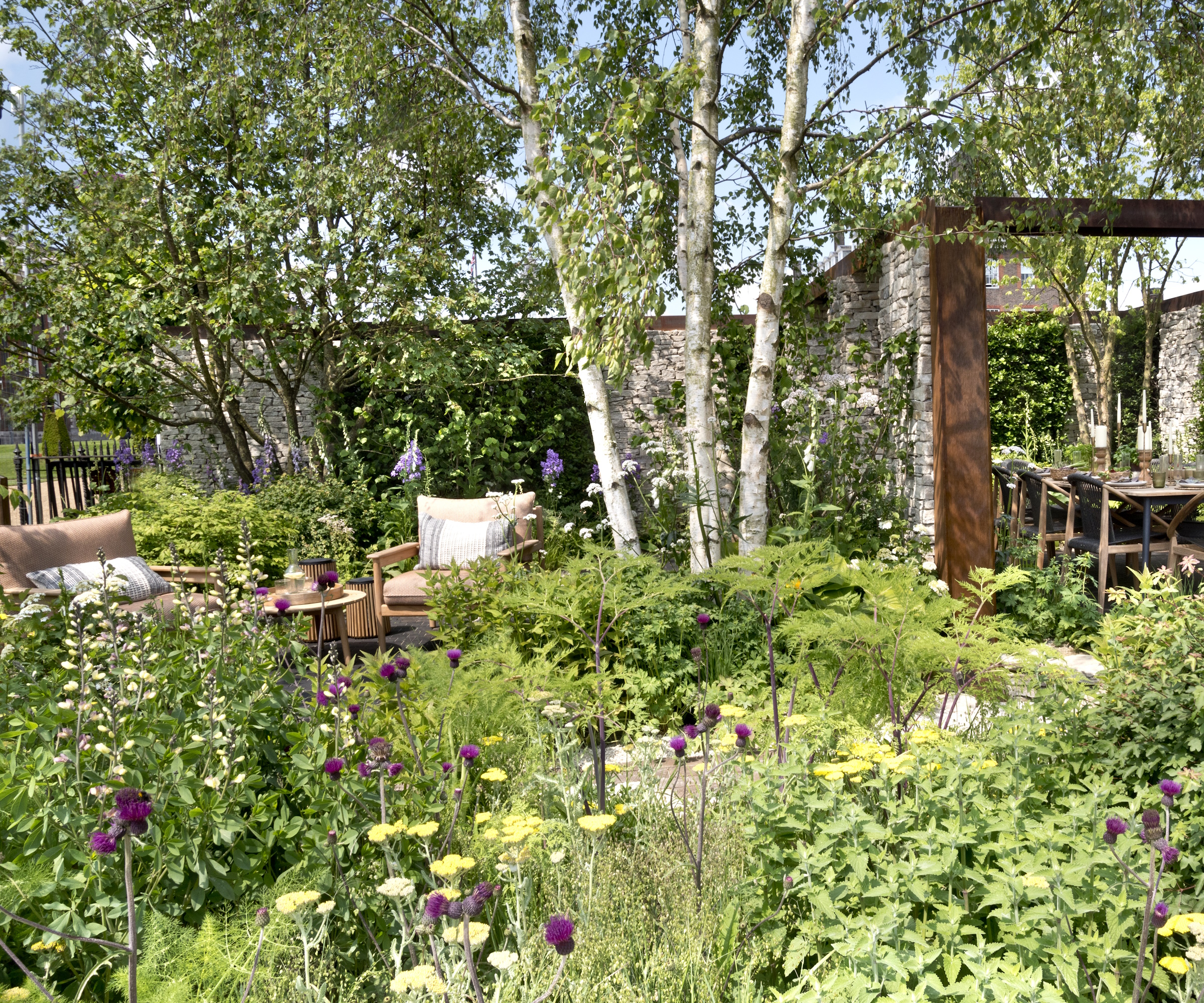
This is a classic style for cottage gardens, where large areas of informal planting are utilized to achieve a casual and unstructured appearance. It’s also simple to accomplish. Just keep in mind that you’ll need three, five, or seven clusters of each plant, then place them in repeating groups for maximum effect.
One of the most unique plants found in cottage gardens, foxgloves feature tall clusters of spotted bell-shaped flowers, making them an ideal option for this style. Drift planting is most effective when it produces a soft, flowing color effect, and foxgloves are well-suited for this purpose, as they are available in various shades such as muted pink, gentle apricot, and hazy mauve.
Add punctuation marks to the structure of the planting scheme with pompom plants, such as agapanthus or alliums, also planted in repeat patterns.
26. Incorporate dazzling elements to fill the edges
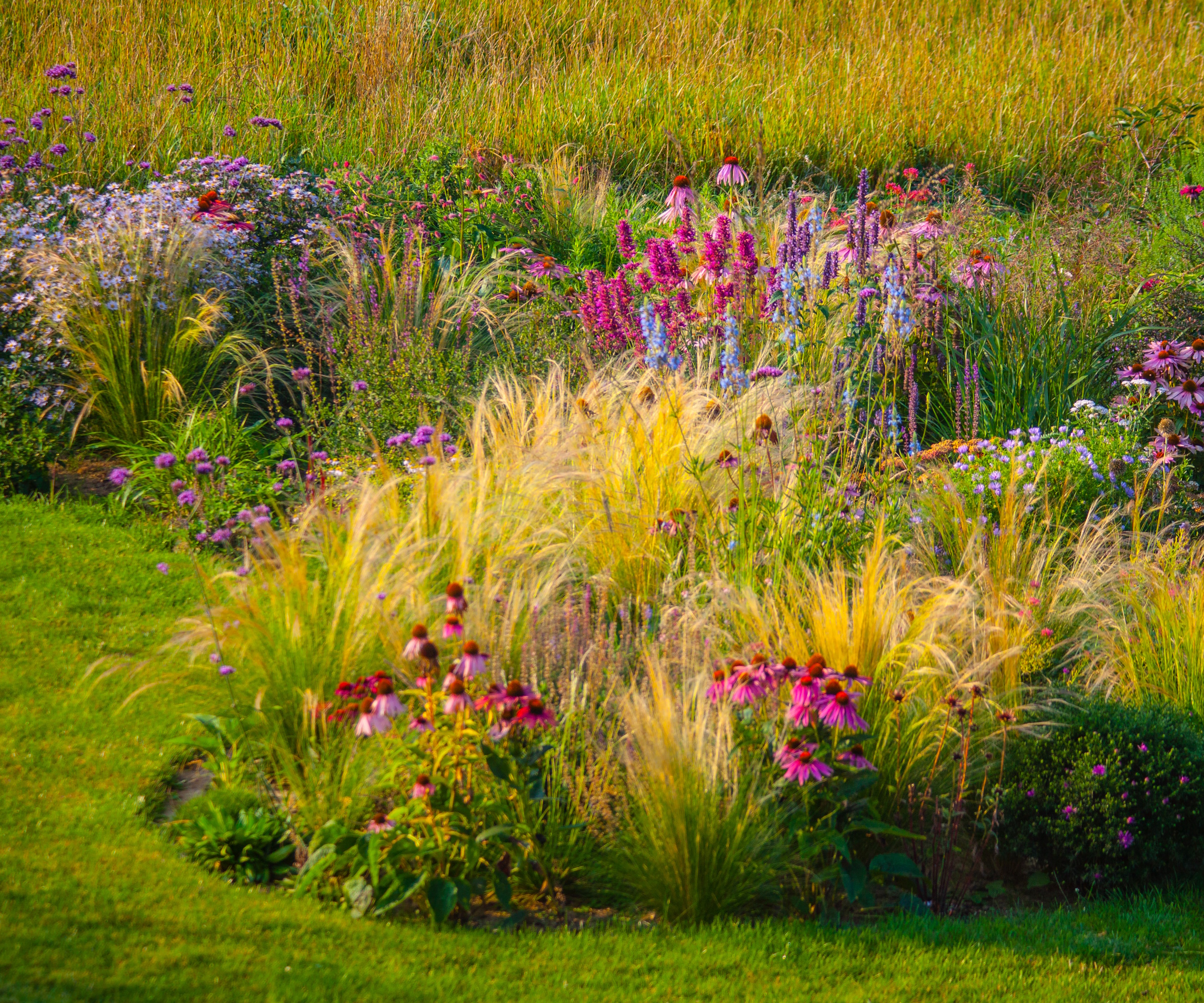
Incorporate bold vertical elements and eye-catching plants with oversized, dramatic foliage to create striking focal points in a cottage garden design. For maximum impact in your flower beds, select attention-grabbing plants that make a strong visual statement.
For dramatic, attention-grabbing tall spikes, choose vibrant lupines, verbenas, and verbascums as they are sure to draw attention. Adding a few vertical elements from such plants can elevate an ordinary garden border and transform it into something remarkable.
The large, silvery, thistle-shaped leaves of tall cardoons make it a striking feature at the back of a garden border. Ideal for creating a leafy retreat in your favorite place to unwind.
27. Select a traditional cottage garden favorite
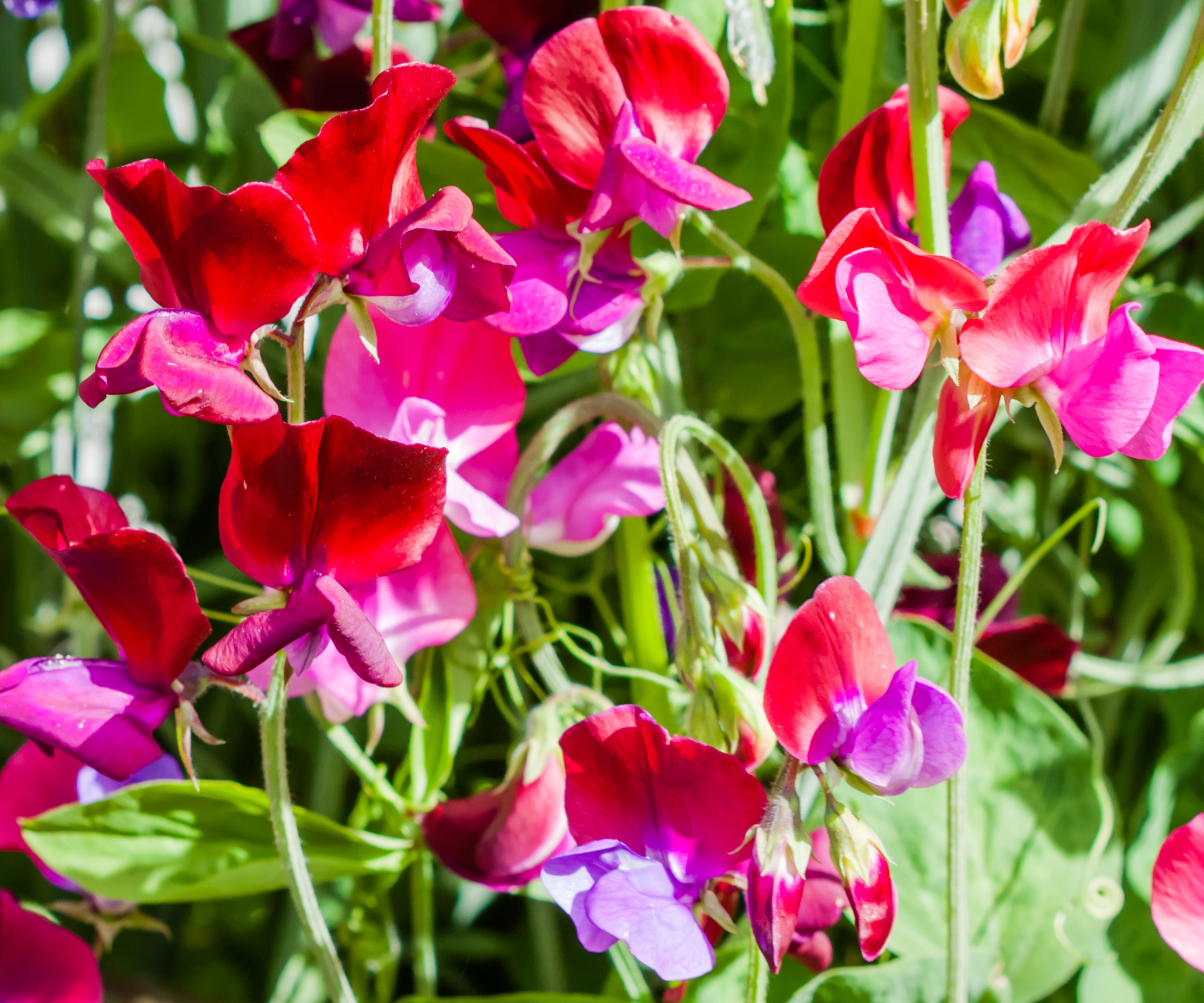
Including scent, color, and stature, traditional sweet peas would be your top choice if you had to pick just one plant. Once you understandhow to cultivate sweet peas, they will soon become a key element of your cottage garden concepts.
Provide them with a wigwam made of hazel branches to climb and weave through, and the sweet peas will flourish, their tendrils twisting around the slender structure to form a stunning summer display.
“Three Times As Sweet” is a new addition – and the first modern grandiflora type to be cultivated, featuring an abundance of that full, deep, and captivating fragrance that defines these traditional garden favorites.Sweet pea seeds can be purchased at Walmart..
This variety features tri-color flowers that combine shades of lavender-blue, purple, and white, forming a striking visual that serves as the ideal accent for a cottage garden.
28. Select the appropriate hard landscaping elements
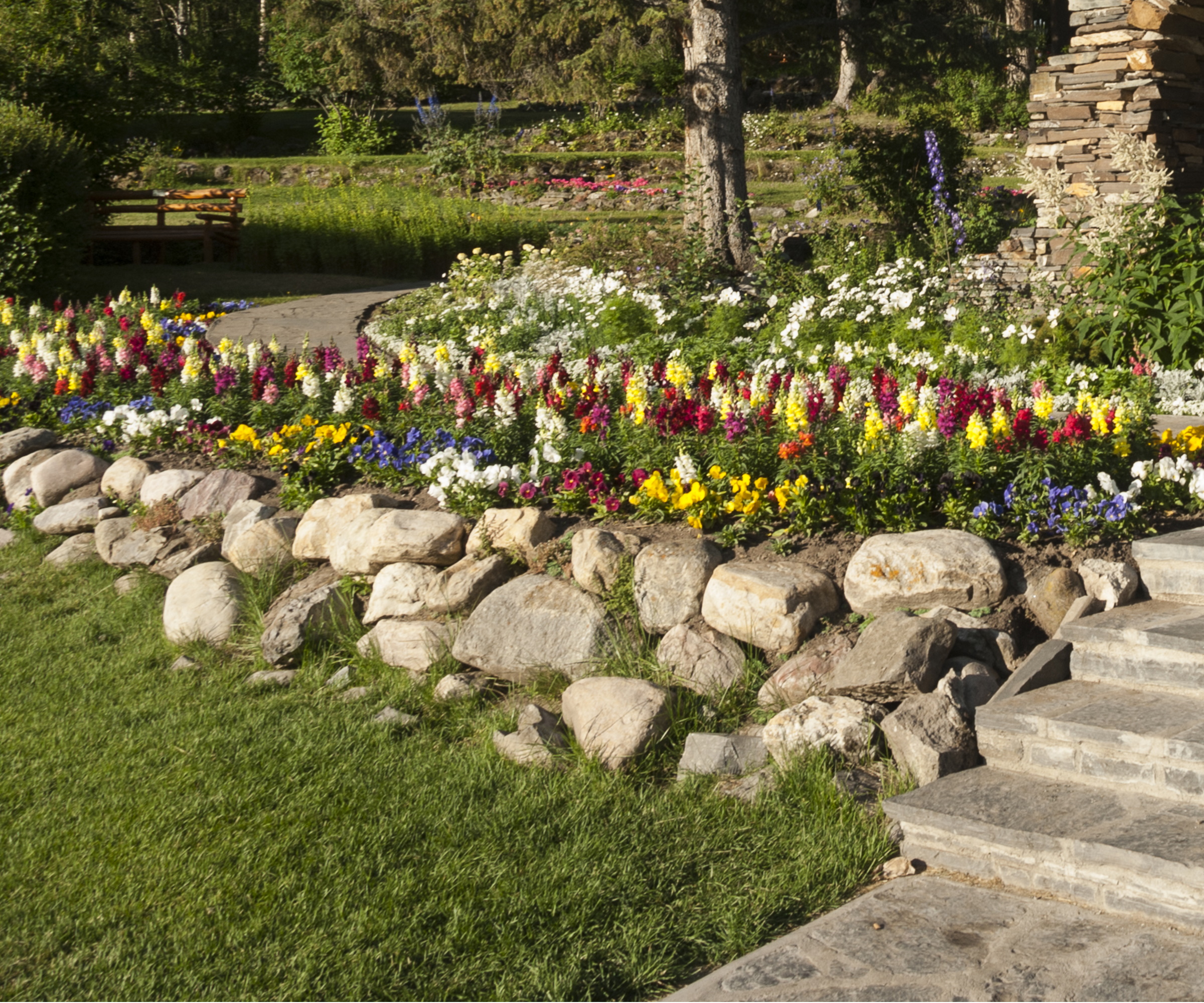
When you are considering backyard landscaping ideas, think: local.
Using locally obtained, natural materials and traditional construction methods connects a garden to its location and reflects what was used historically. Checking nearby salvage yards and local stone suppliers can be a great way to find paving materials, while seeking out local artisans for furniture and decorative elements is also recommended.
Reclaimed stone is well-suited for terraces and walkways, as well as brick, provided it aligns with the local area, and gravel (cinder was commonly used in earlier times).
29. Think about a garden pond in a cottage-style setting
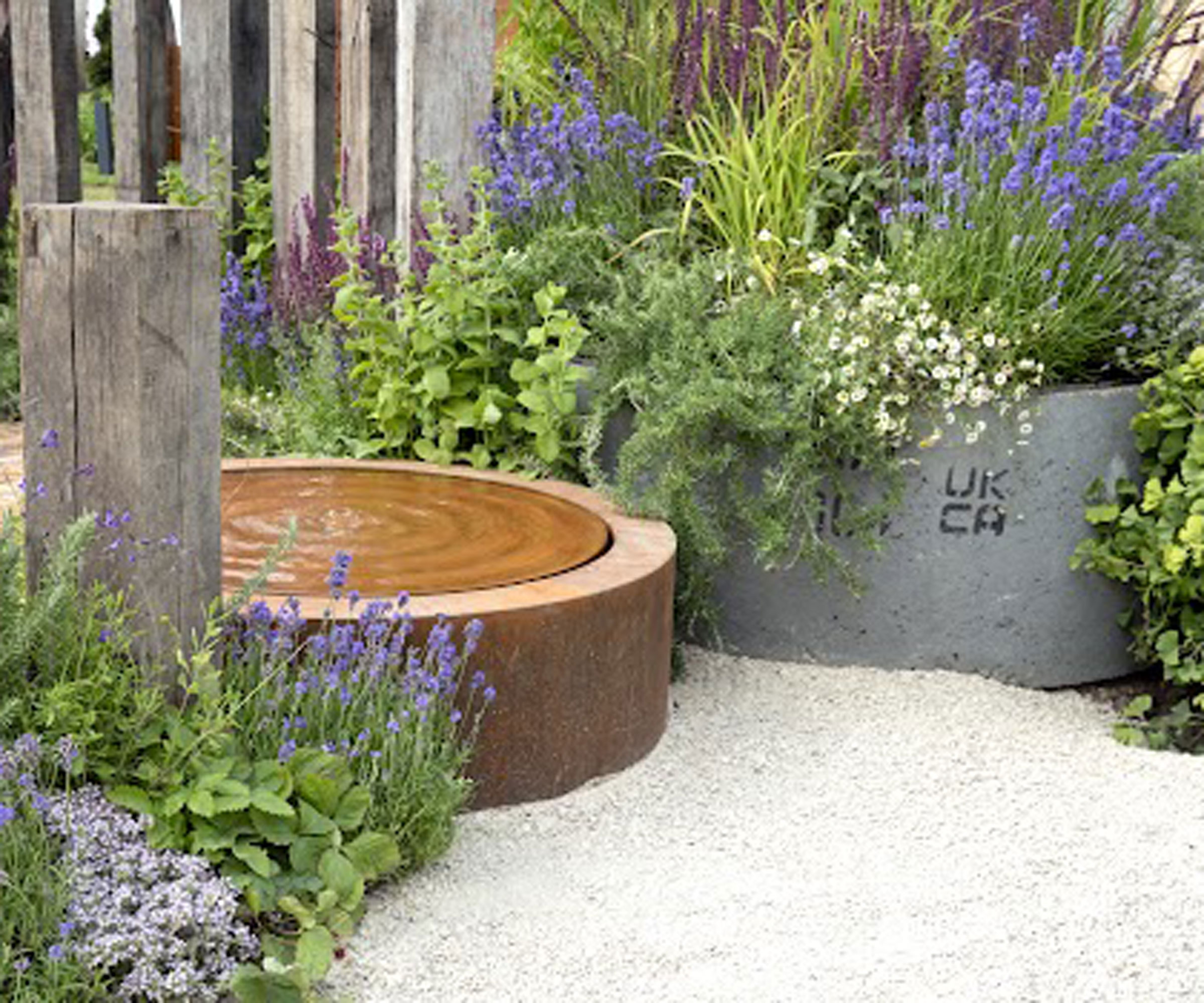
Cottage gardens must always featurepond ideasWater can contribute to forming a balanced and sensory environment, significantly enhancing the charm of cottage gardens.
Water should be used to bring life to the area,” says Rachel Bull. “For example, a reused stone basin with a hand pump would fit well in a cottage garden. Consider flowing water, pond vegetation, and even the sound of a frog!
If a pond were included in the general design, it would be suitable to create it in a way that promotes wildlife, thereby enhancing the garden’s biodiversity. Think about incorporating a wildlife ramp or ensure there is access so that mammals and amphibians can enter and exit the pond.
30. Add a greenhouse
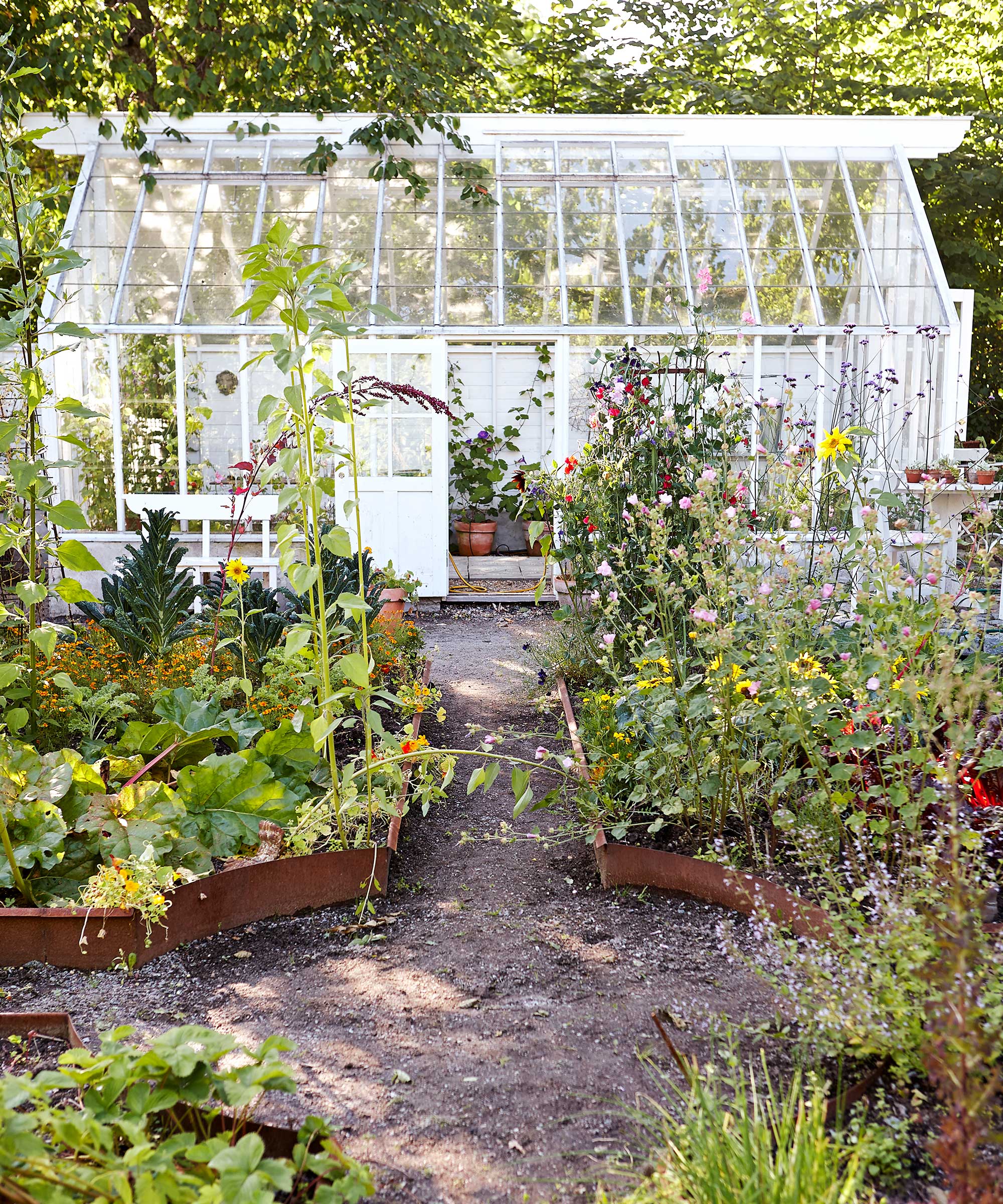
Greenhouses can serve as a highly effective centerpiece in a rural garden, and their existence as a sturdy, yet elegant garden feature offers the ideal contrast to gentle, flowing plant arrangements.
‘Victorian greenhouses are especially effective, featuring a style that brings to mind the feelings of a previous time and gardens reminiscent of classic country estates from earlier centuries,’ suggestsTom Barry, CEO of Hartley Botanic. “Opting for a classic design can also enhance a rural aesthetic – offering a more conventional appearance.”
Alternatively, choose the sleek design and hidden technology of a modern glass home, which can create a striking visual difference when paired with casual, refined plant arrangements.
Lastly, don’t overlook the effect of color,” notes Tom. “In a rural garden, clients often go for soft hues like Olive Leaf, Forest Green, and Verona Stone. These classic, earthy tones assist in blending their greenhouses with a country setting.
31. Adorn an outdoor table with flowers from the garden
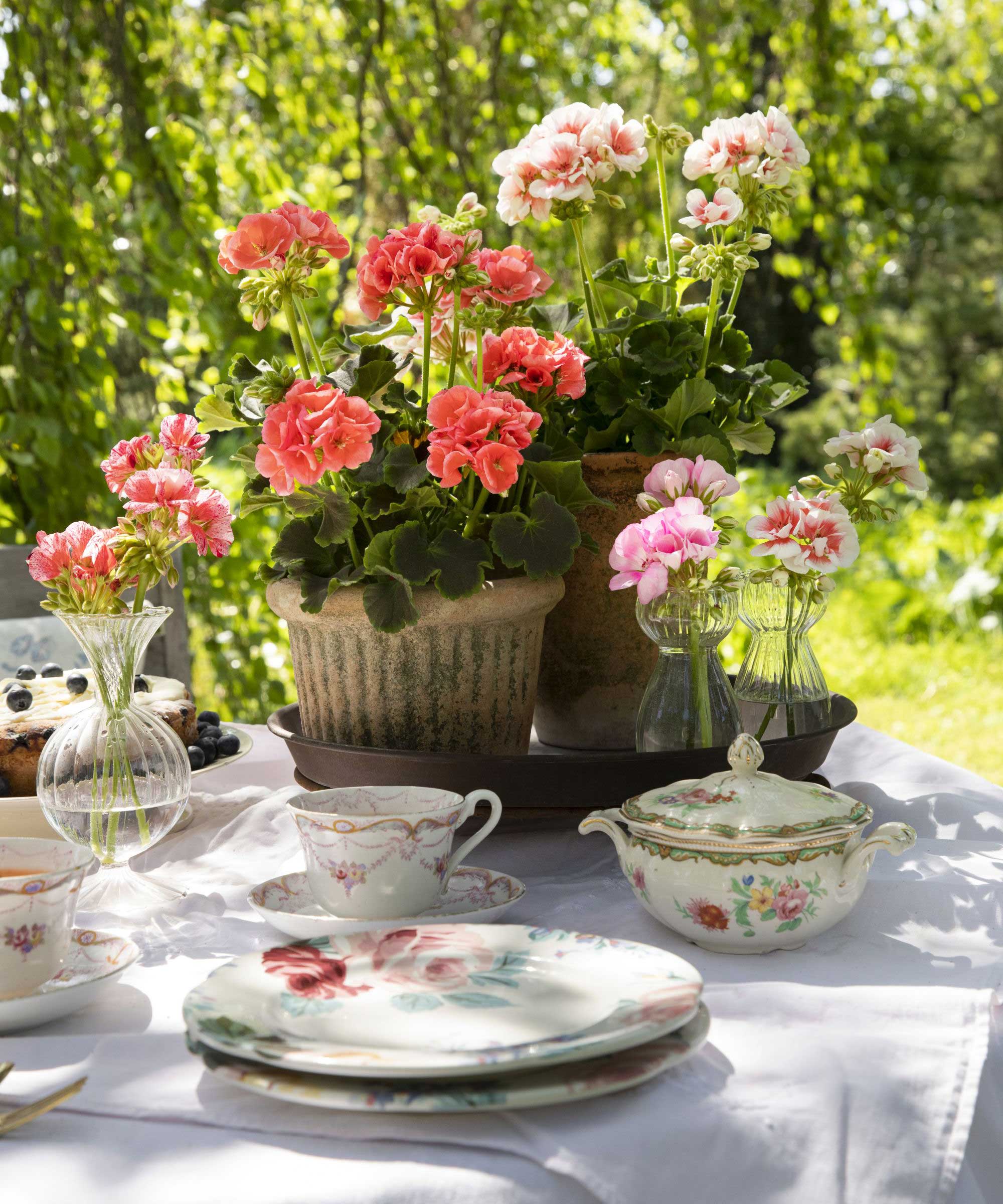
Associated with country and Mediterranean gardens, adaptable geraniums are consistently popular.
A wide range of colors and types ensures there’s something for everyone’s preference. After being planted, they easily turn sunny or partially shaded balconies and terraces into stunning displays of flowers throughout spring and fall. Additionally, their fragrance is believed to keep flies away, making them ideal for placement near kitchen windows.
To create a charming and lovely tablescape in a rustic garden, cut geranium flowers and arrange the sprigs in small flower vases. Mix in taller blossoms and stylish candles to enhance the vertical aspect of your arrangement.
32. Repair rustic walls
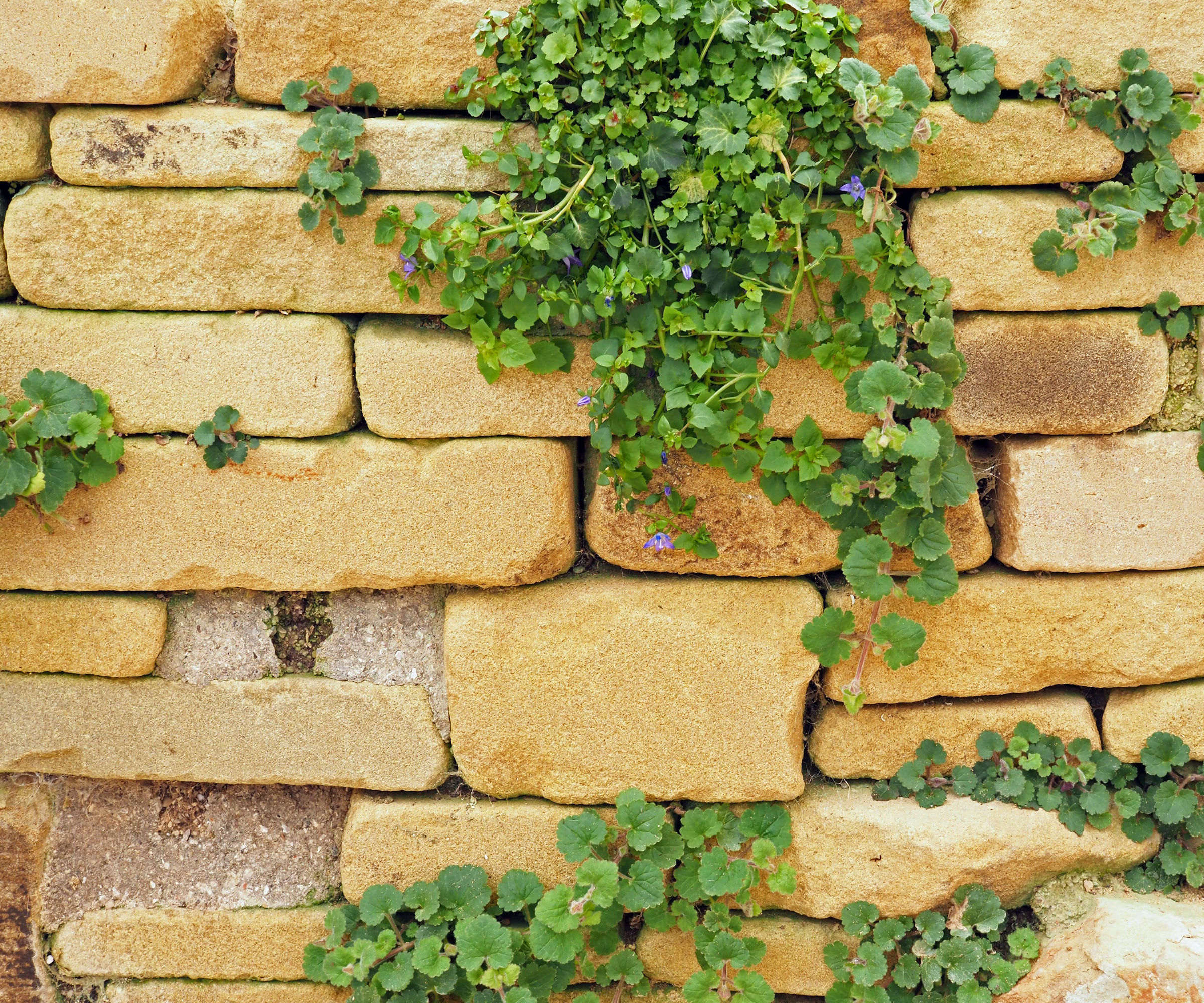
Just as the design of your house influences your choice of interior elements, examining current buildings on your property can be beneficial when developing your cottage garden concepts.
Weathered stone and flint walls probably originated from nearby resources, blending with the natural scenery. Maintain them whenever possible, consulting expert masons if needed, and let these elements form the foundation of your countryside design.
Natural erosion, along with moss, lichens, and naturally occurring wildflowers, will create a more gentle appearance around these durable edges, adding an attractive aged look and dimension to your rural garden.
33. Celebrate historic features
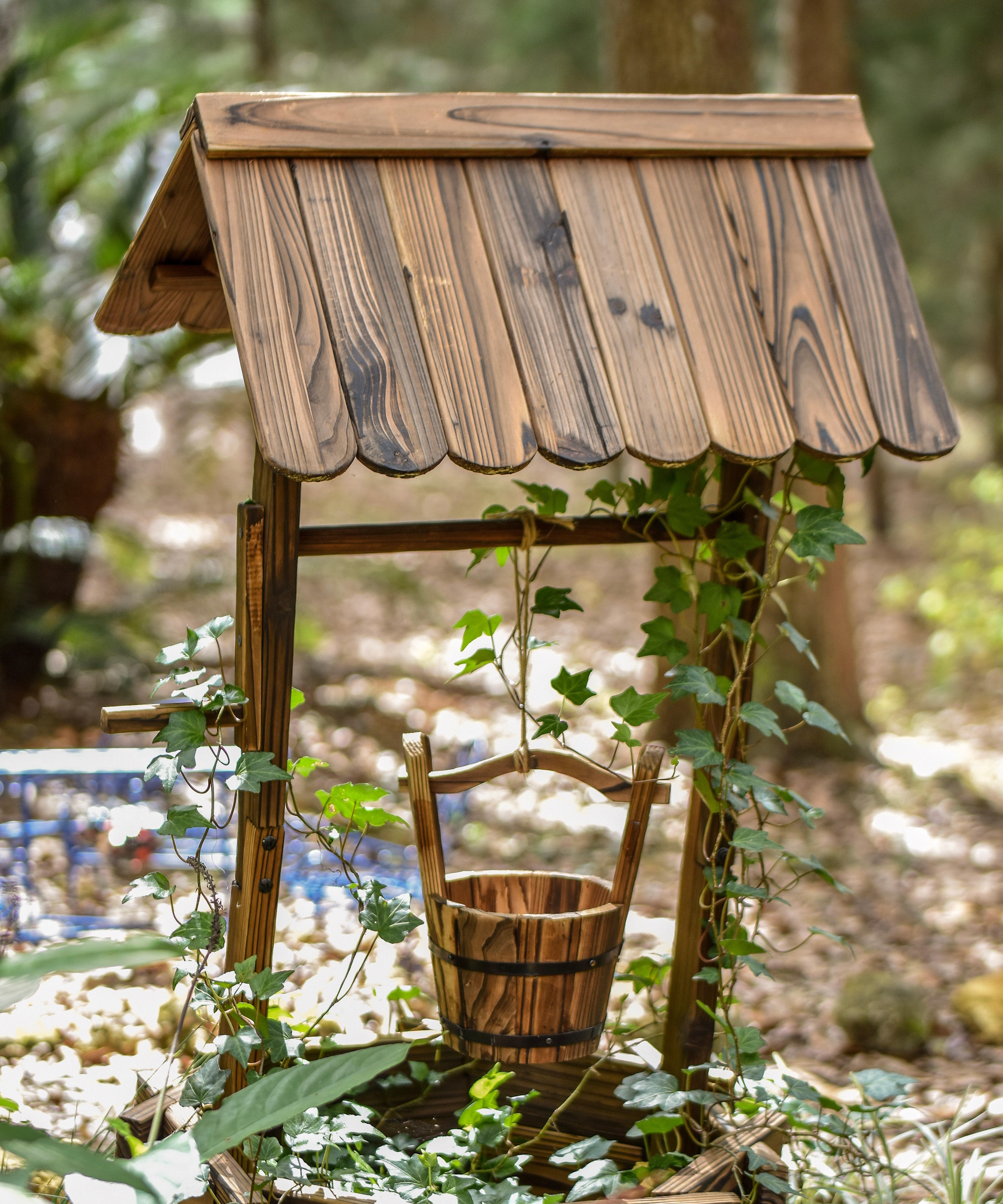
If your country garden includes a feature like an old well, maintaining it can enhance the story of your home and serve as a central attraction in your outdoor area.
Ensure the structure is stable, fix any damaged brickwork or metal components, and ensure safety—here, a grid covers the opening of an old well, exposing its depth.
FAQs
I enjoy growing plants typical of a cottage garden, but I only have a limited terrace space – what should I cultivate?
If your area is limited, make a bold statement with planters. Stock containers with flowering perennials and scented herbs like verbena, lavender, and coneflowers. I also recommend planting annuals to bring variety and change to your garden design every year. Why not try growing some sweet peas in pots supported by a small bamboo tripod?
Including one, two, or multiple of these concepts can help achieve a cottage garden style in any yard, regardless of its size. Keep in mind, with cottage gardens, the more the better, so don’t hesitate when it comes to planting.
Although you may desire a classic, cottage garden style, also think abouthow to design a contemporary cottage garden, integrating some of the themes mentioned here with clean lines and precise edges, to bring the charm of a cottage garden into a modern setting.
Like this article? To discover more stories similar to this, follow us on MSN by clicking the +Follow button located at the top of this page.

